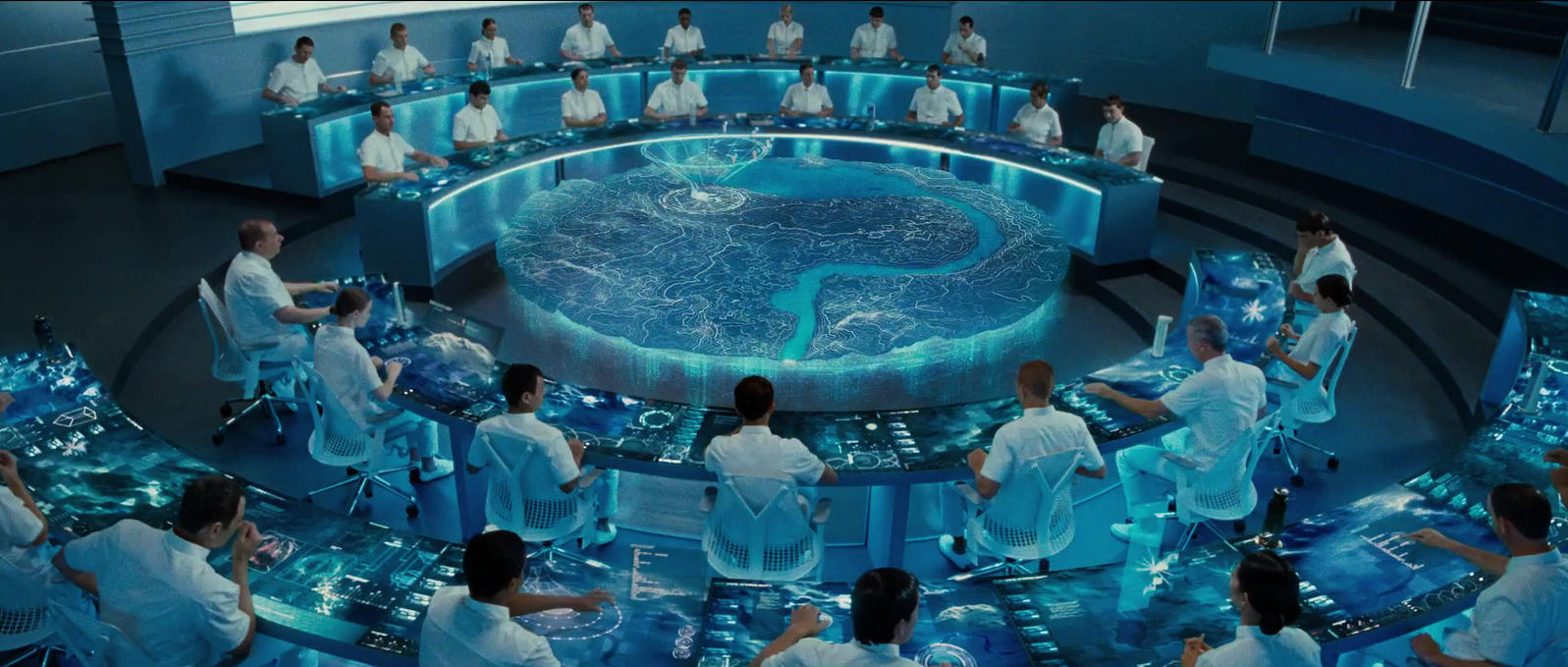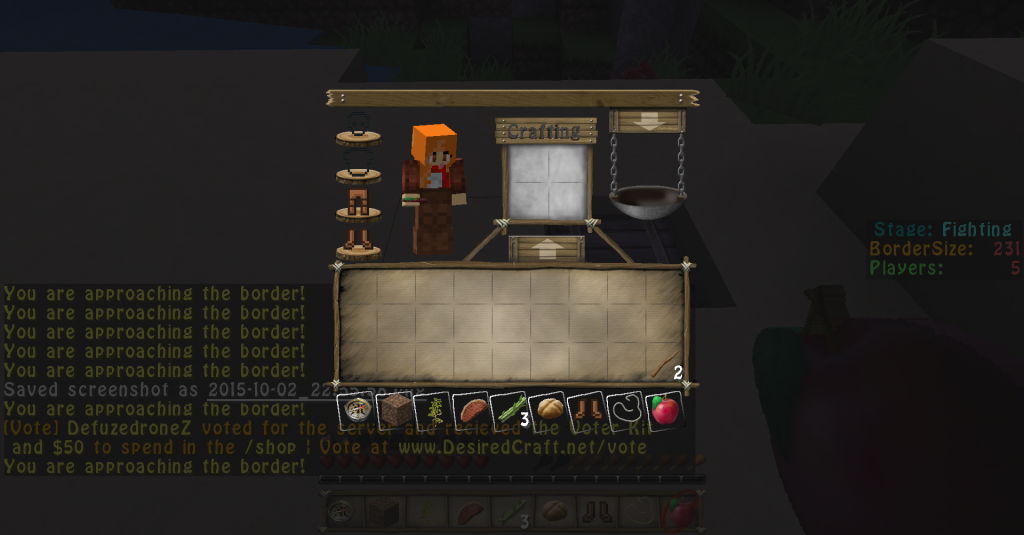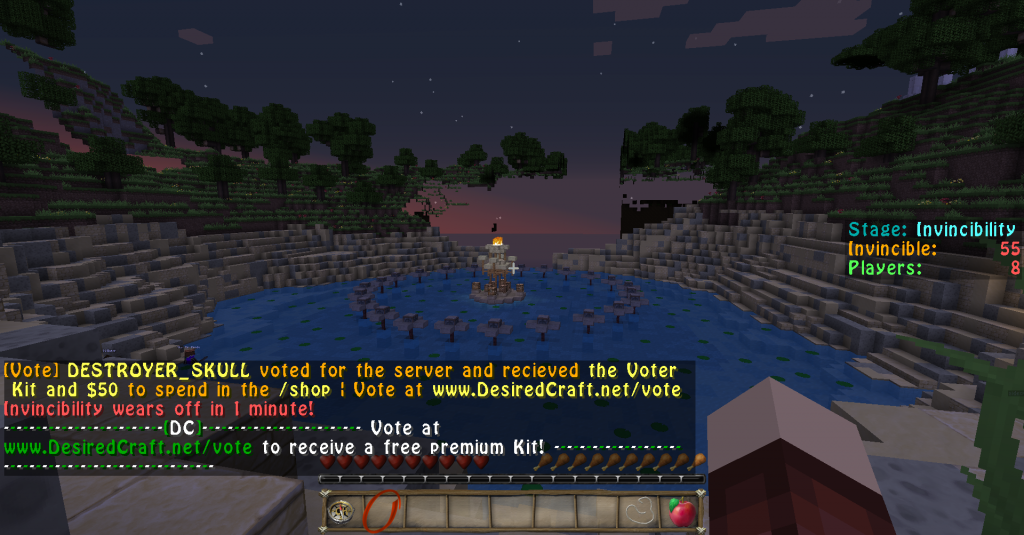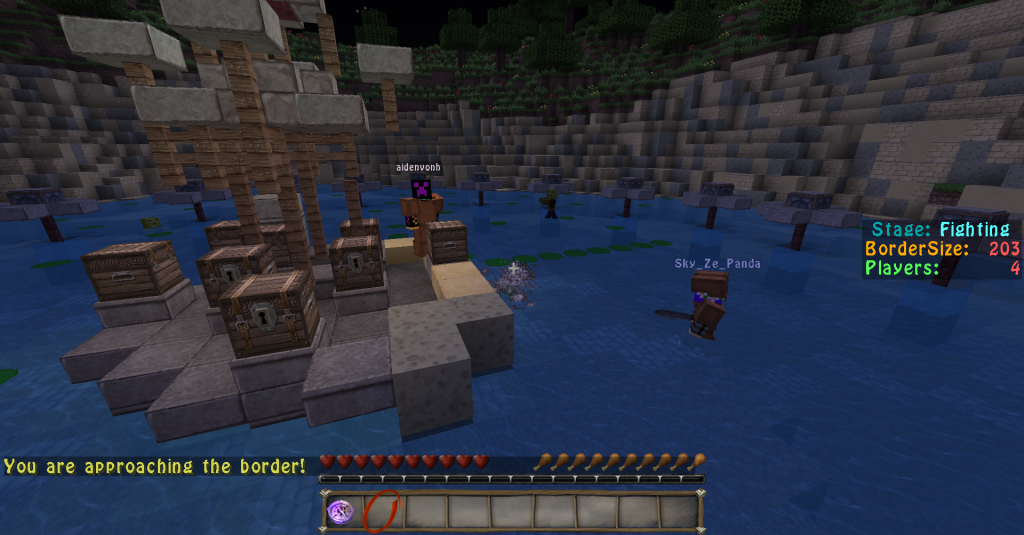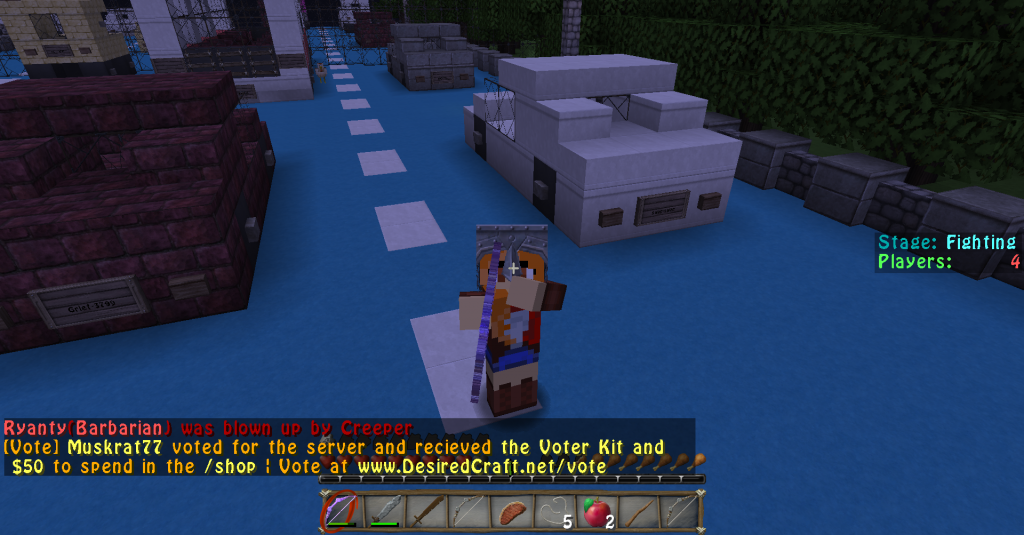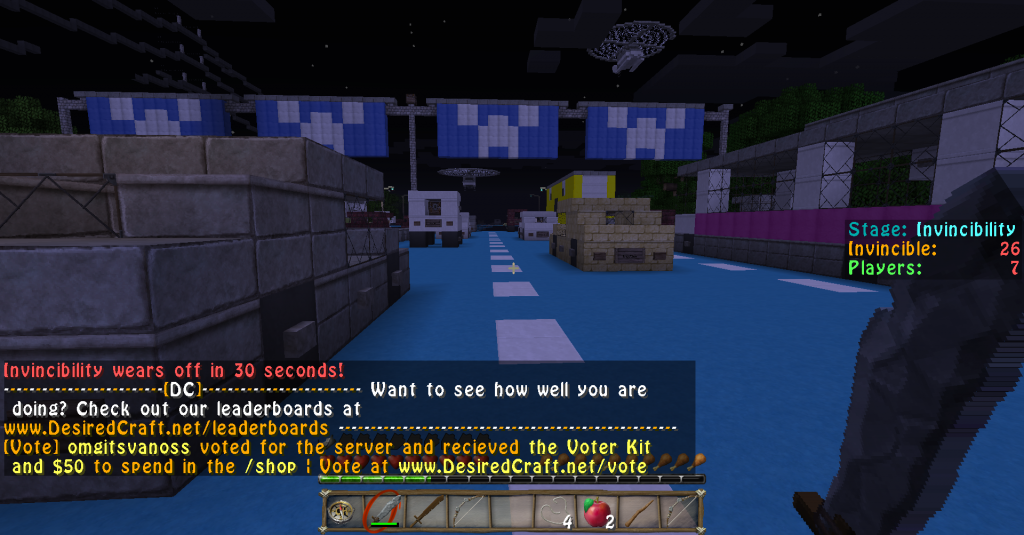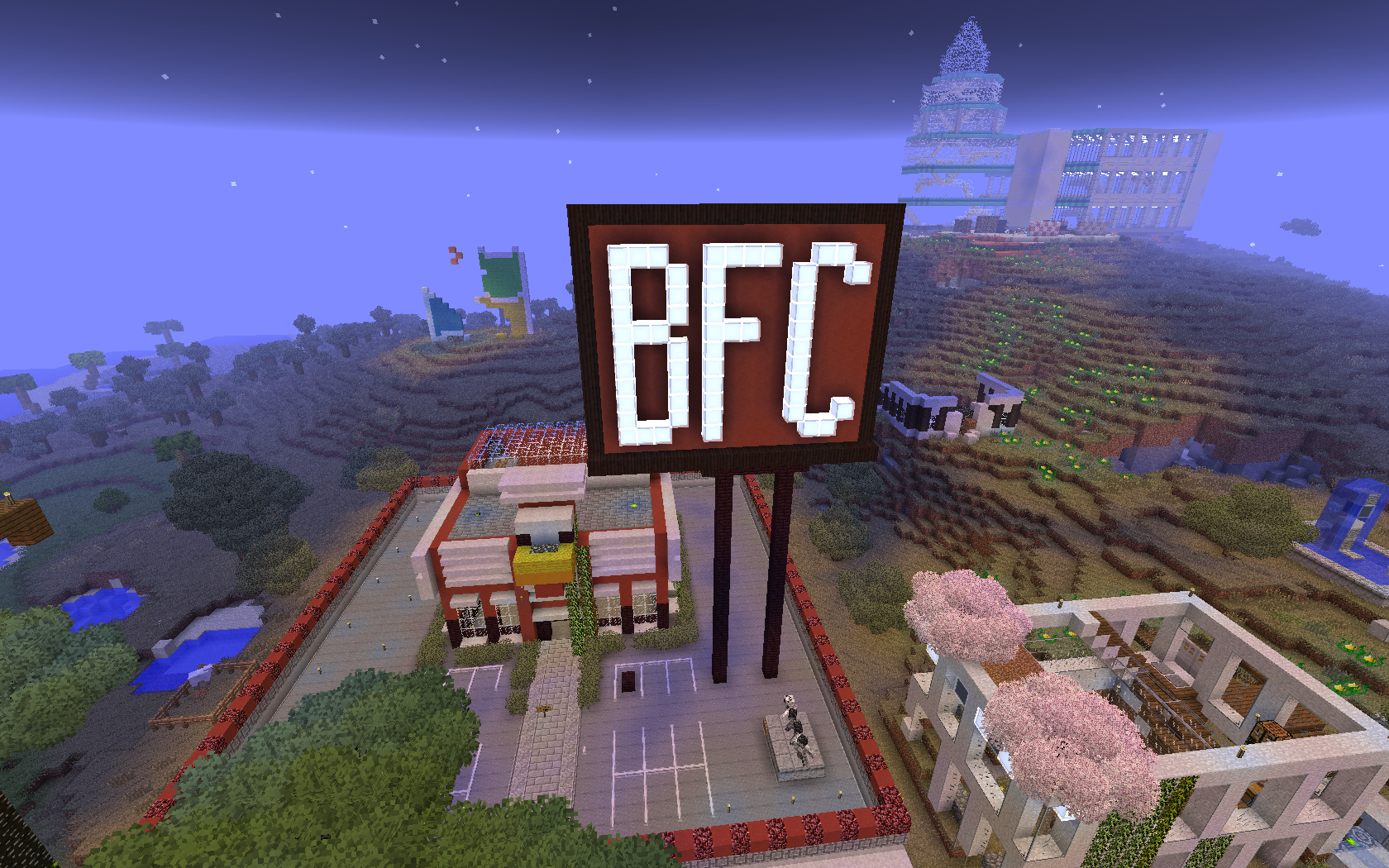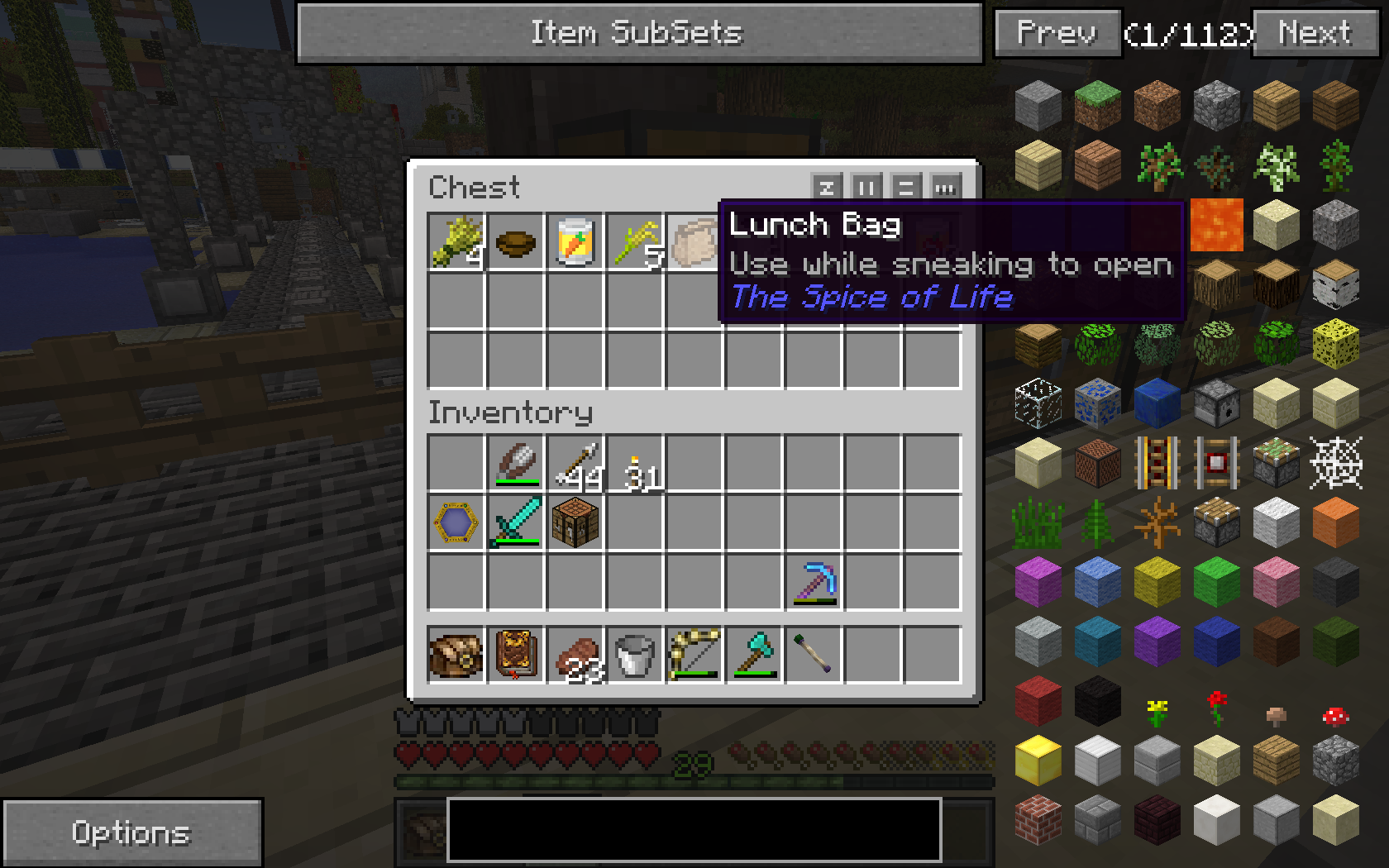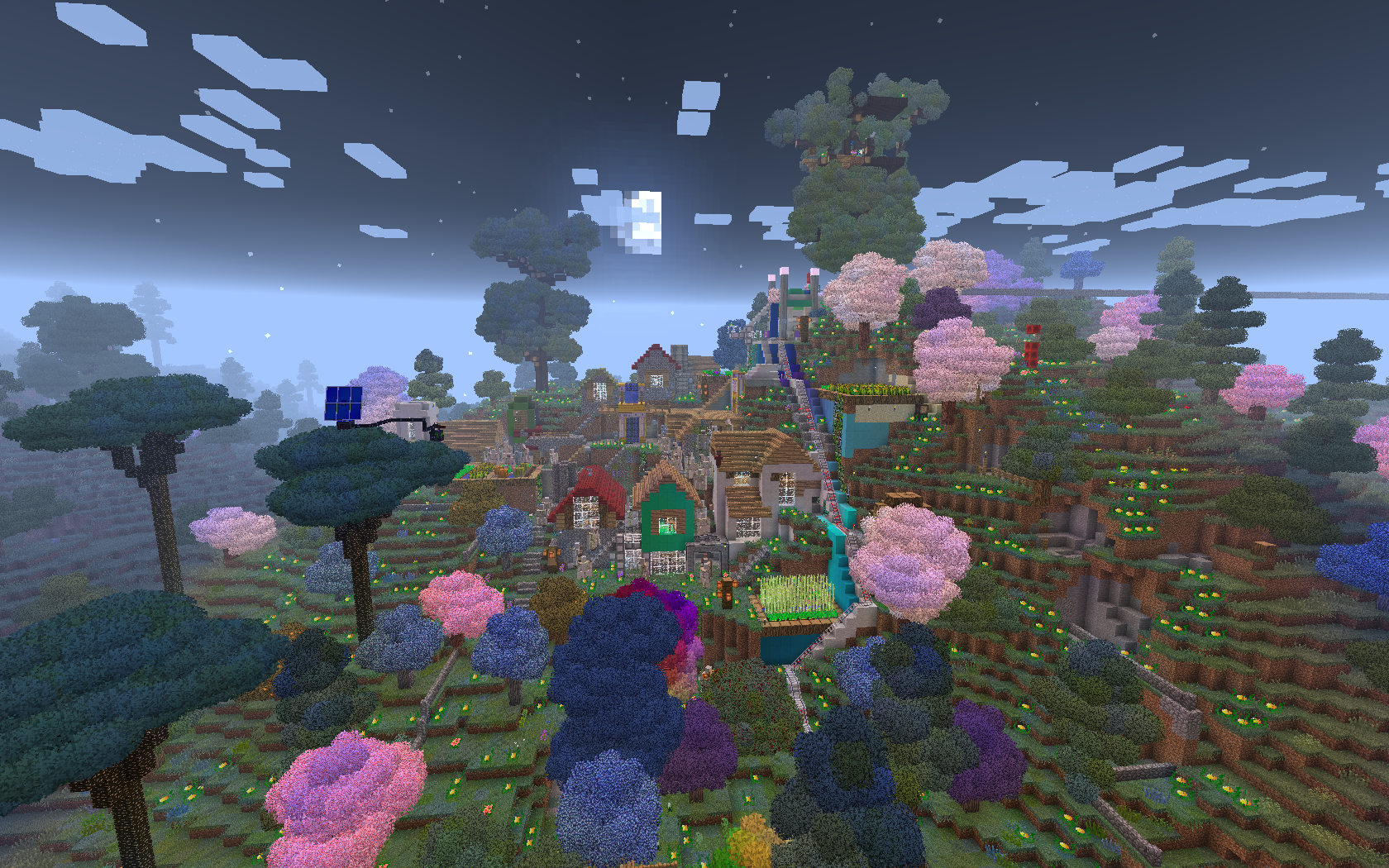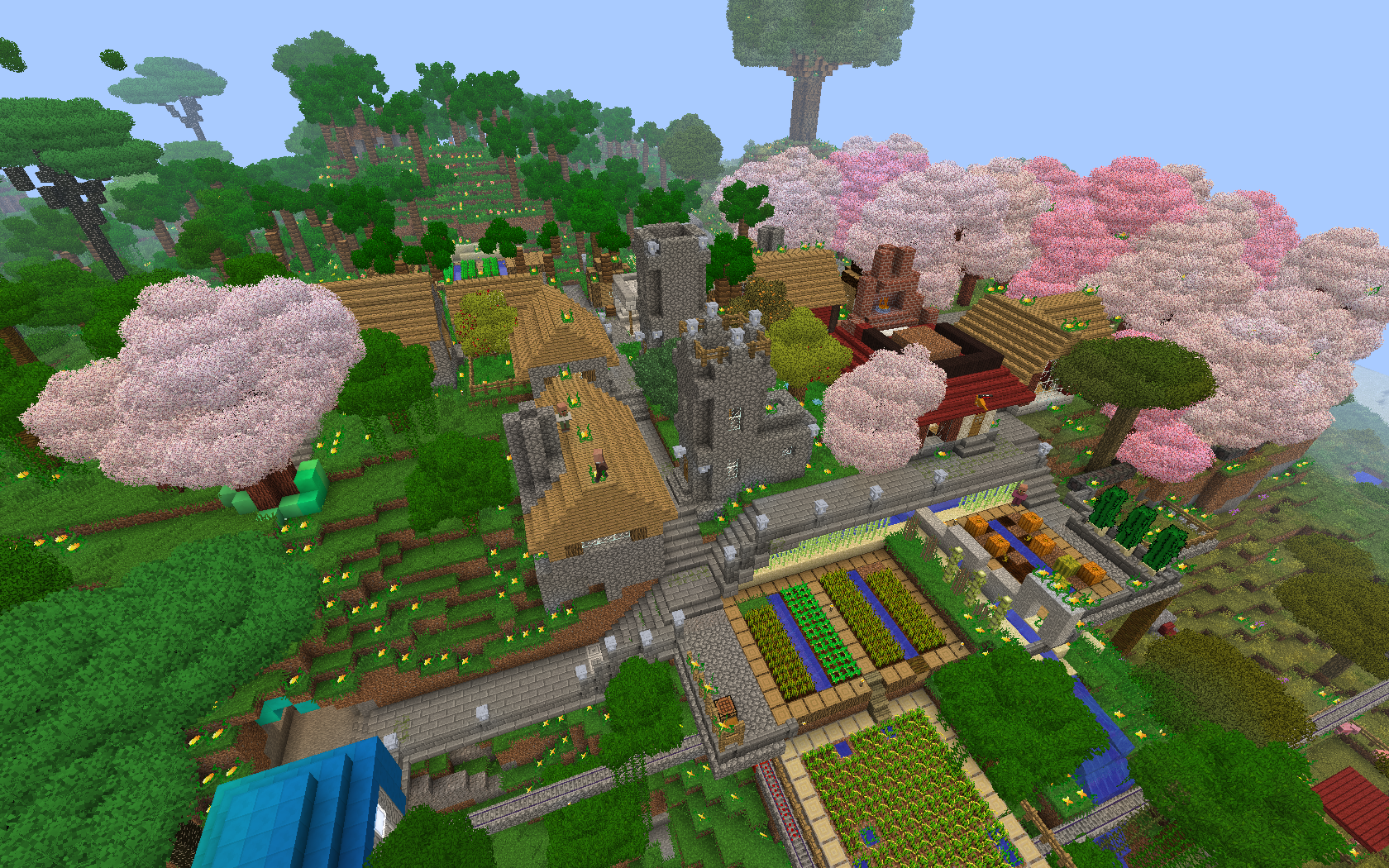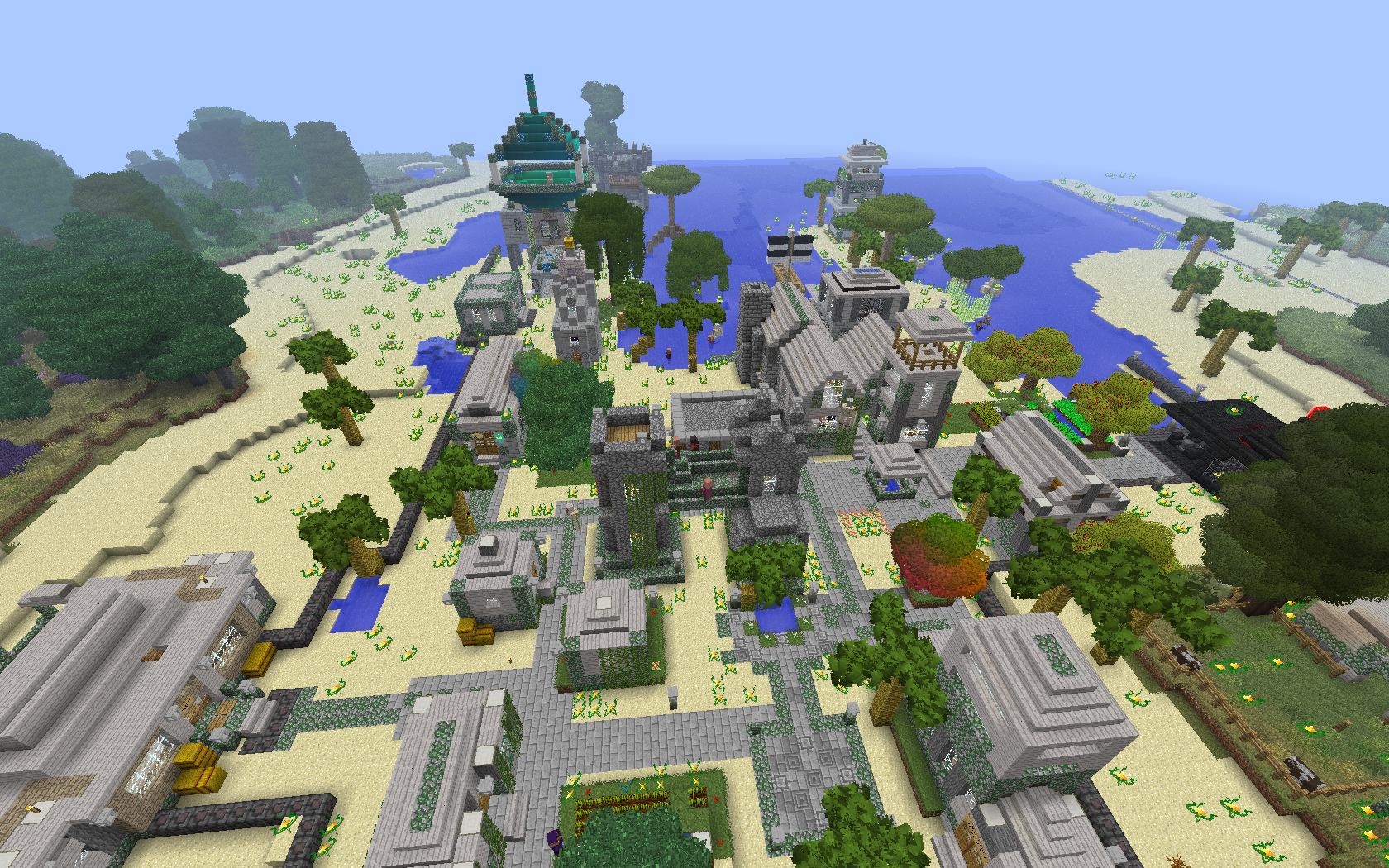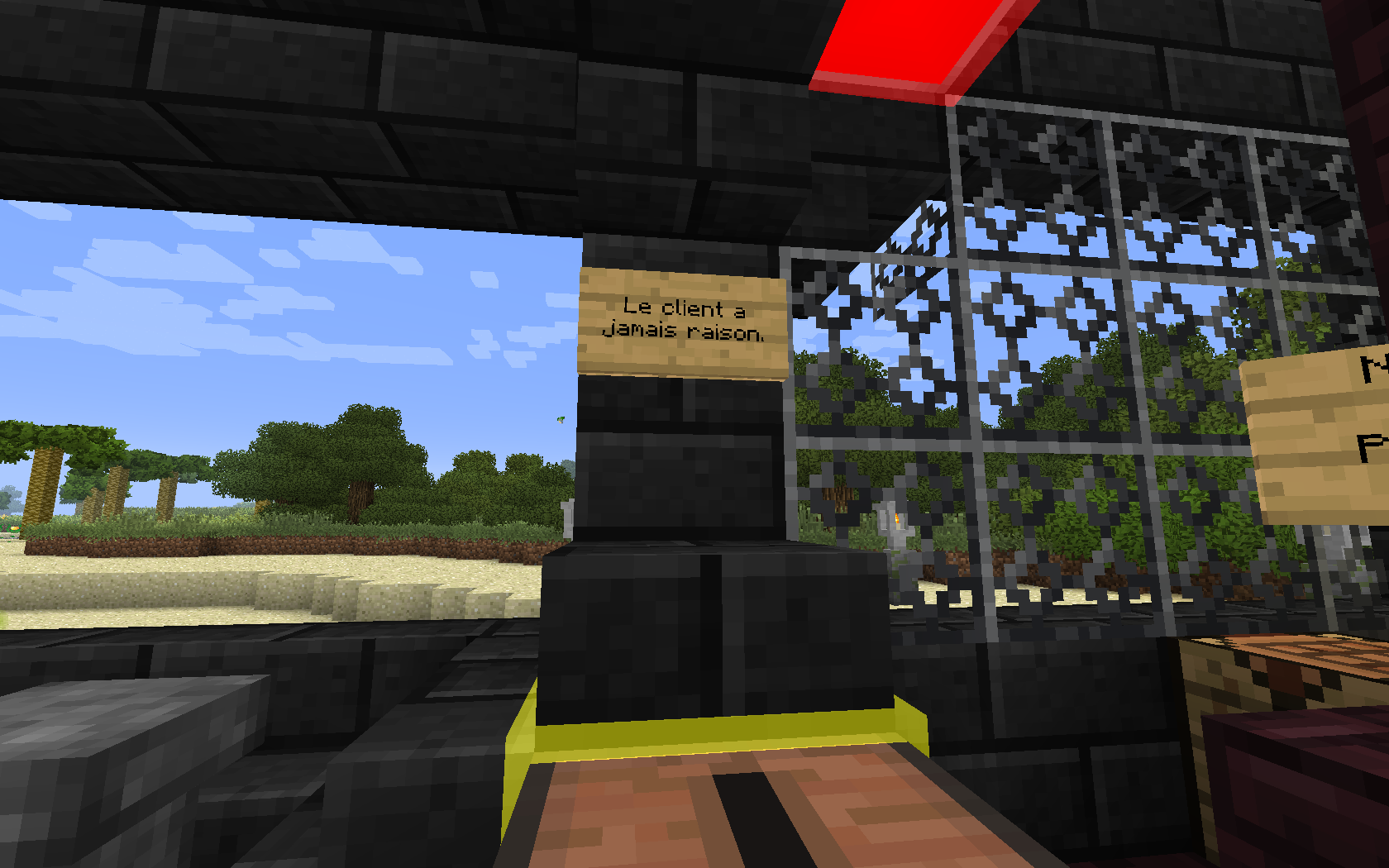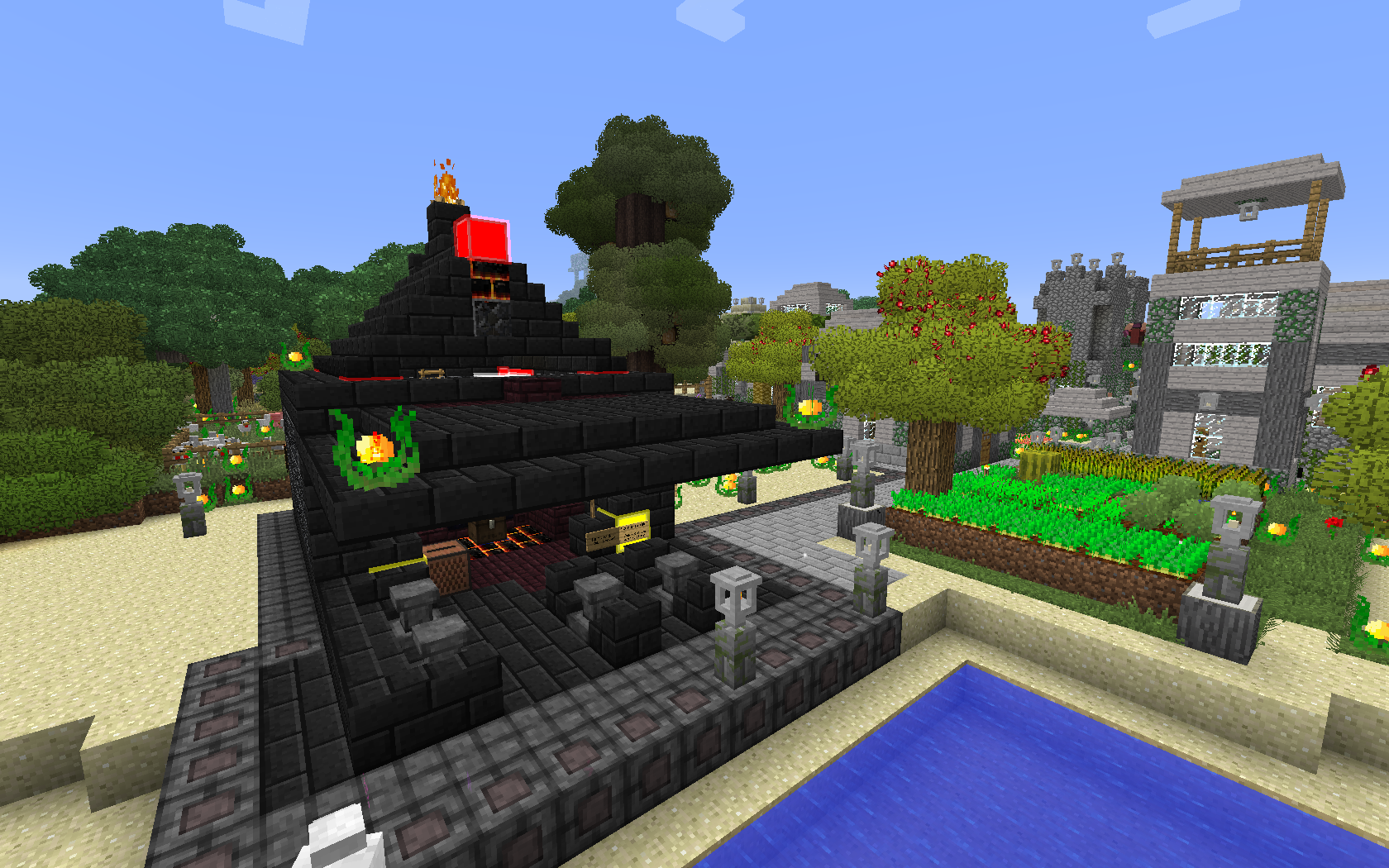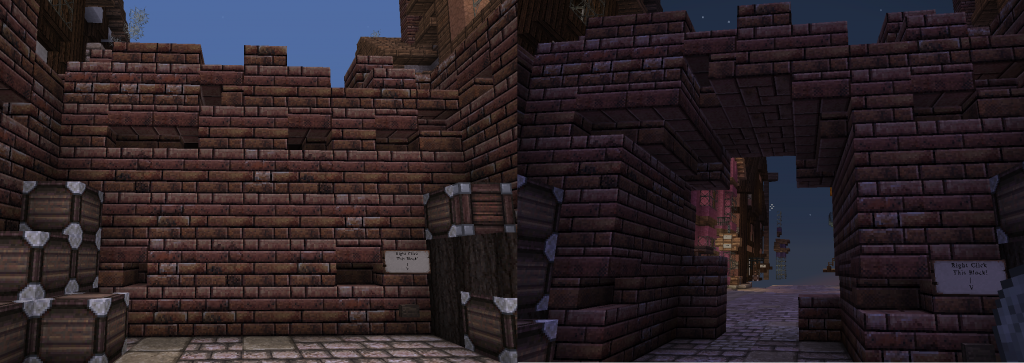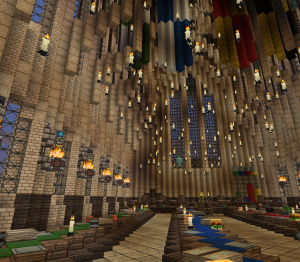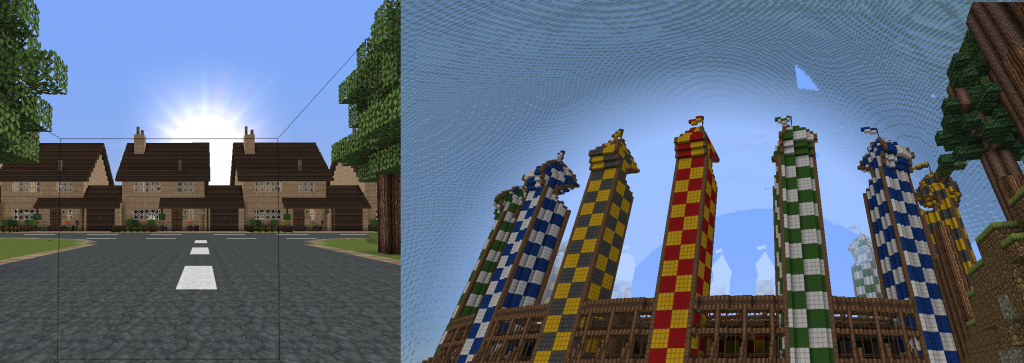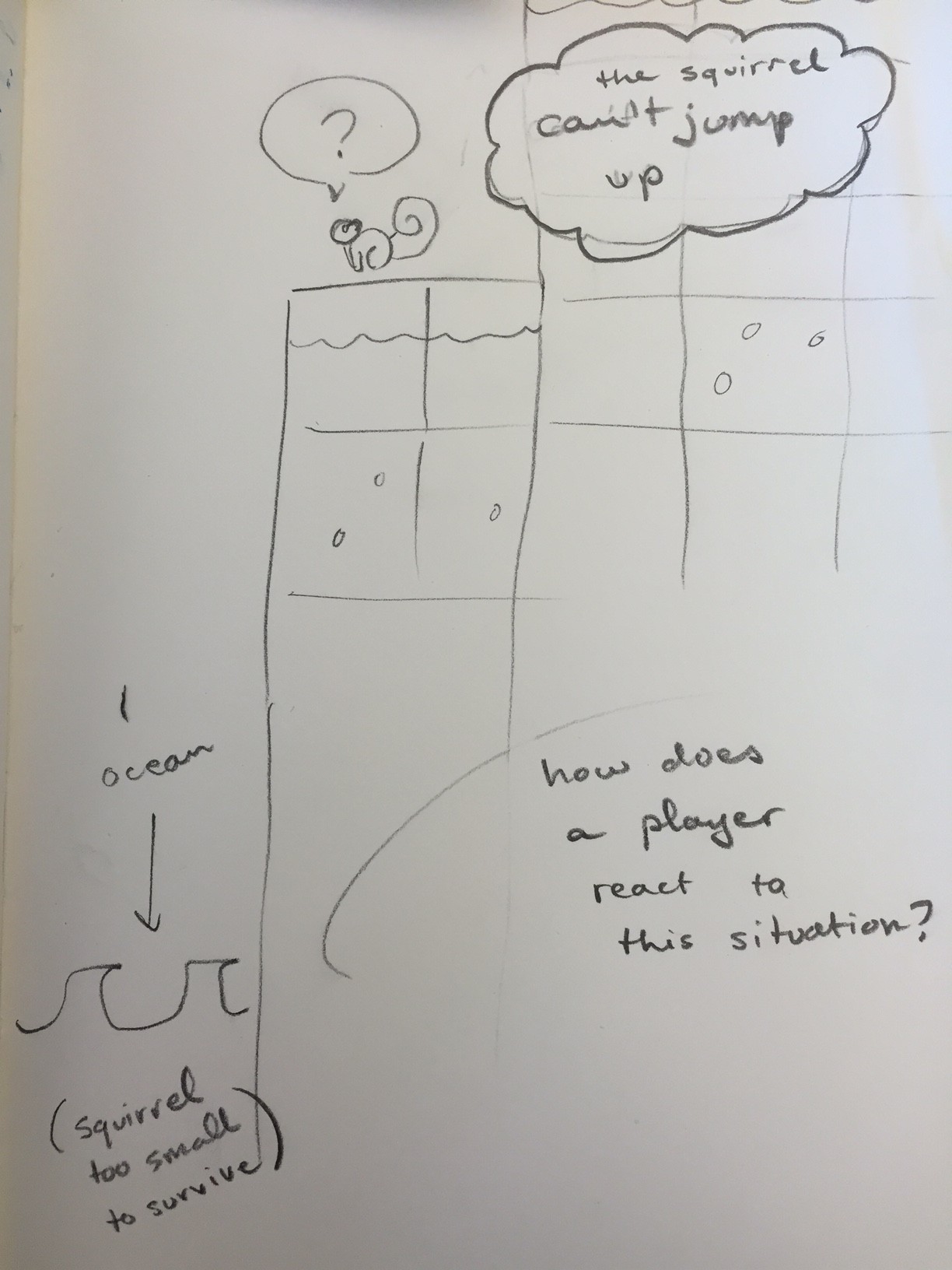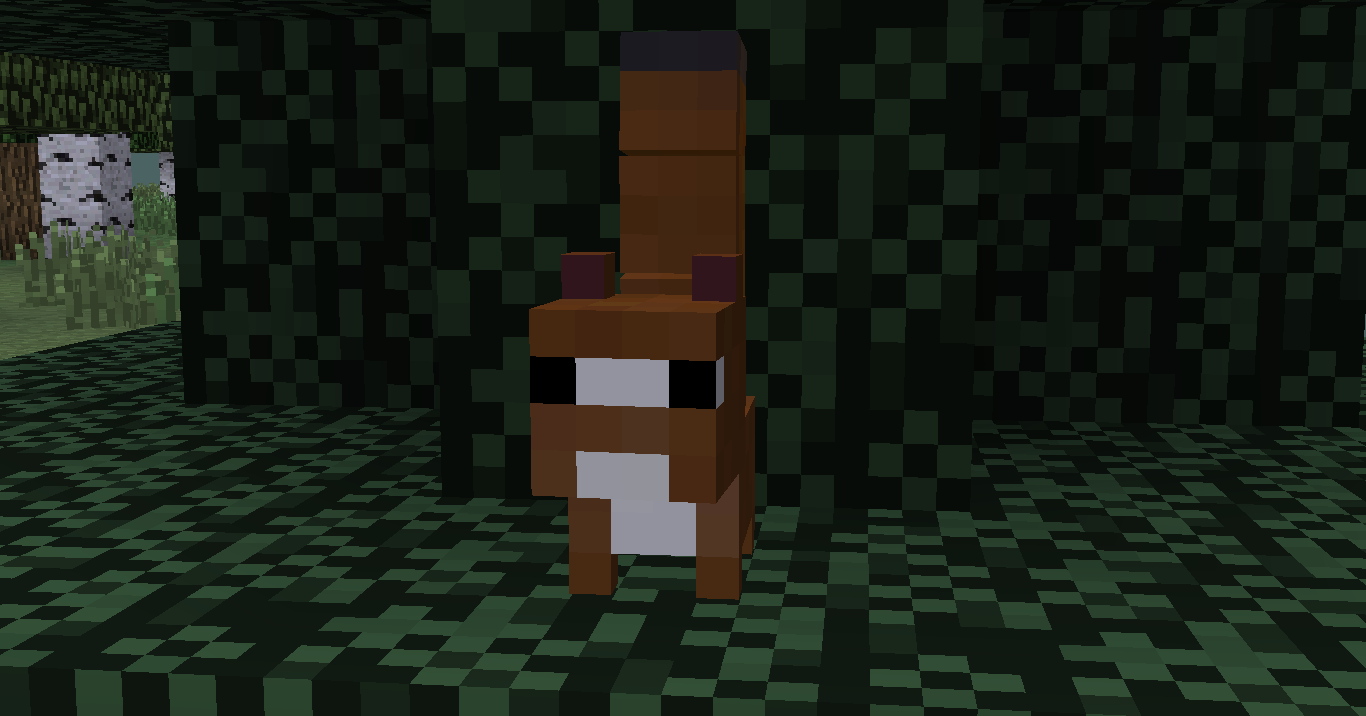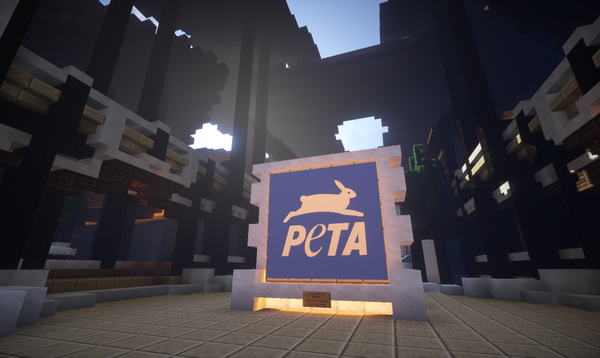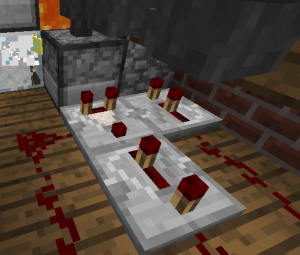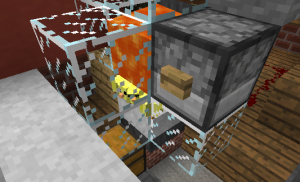The post Place for a “real” Hunger Games server? appeared first on &.
]]>This week I plan to share my ideas for how to create a more authentic portrayal of the novel “Hunger Games” in Minecraft.
What seems to be the crucial element in the realization of a “Hunger Games” server is the player-versus-player arena. Why do I say this is crucial? Every #Hungergames servers we have tried has revolved around players fighting other players in order to survive and “win”. However, that appears to be the only thing that is like “Hunger Games”. I believe this is boring and is just an excuse to call everything #Hungergames when in fact, it is only PVP. So what could WE do differently?
For starters, we could have our own “Head Gamemaker”. What, or who is this person? In the book it is Seneca Crane, and then Plutarch Heavensbee. As “Head Gamemaker” they create the arena where the participants from the different districts will compete. Once the games begin, they control the environment with their team of controllers that can cause forests to combust instantaneously, creatures to magically appear or any other such activity. By doing these things, the Gamemaker insures that the different “tributes” will end up close to each other and thus fight – creating a “glorious show” for the residences of the Capital (or a depressing and distressing one for the districts watching their children die).
So what could we do? We are all technically “Gamemakers” in that we will be creating the arena. My suggestion is that we have live events. Of course, we could not always hold live events as we do have lives other scholarly things to do–but the idea remains that we could host events. First, we would need to make sure that all “gamemakers” are in some sort of “creative mode” and perhaps invisible to players in “survival” mode. Second, we would create a sort of ceiling around our map — this ceiling would be made out of glass. We could see everything happening on the field from our high vantage point. Third, we would have levers or other devices we could switch on and off to: pour lava from the sky and burn the forest, release mobs, et etc. This would allow us to create a more realistic Hunger Game competition like in the “Hunger Game” novel. Additionally, each event a different member could rule as “Head Gamemaker” and make the crucial decisions.
But why should we only focus on this one aspect of the novel?
While speaking with Nic on this subject, I told him about one another though I had come up with and that we then expanded together.
The bigger Minecraft servers usually have multiple “lobbies” to hold many players: players might be in these lobbies to mingle, to choose a game, or are waiting for a game to end so that they may start. Why not have our lobbies named after the 12 districts?
When a player would log into our server they would be assigned to a district. From there they wait for their turn to be selected by the computer. When it is their turn, the chat would post a message, example:
Marie has been selected to represent district ____
At this point, another player could then respond with something like:
//I volunteer as tribute! OR //VAT
of course, then Marie would have the choice to begin her game or to allow the other player to volunteer.
Alright, so players can play around in different lobbies while they wait for the game to start, big whoop, what else?
Well, some players could also be placed within The Capital and be given thousands of diamonds. These players could then play as invisible players within the actual arena and dispense presents to their favorite tributes–like in the novel. The “tributes” would be teleported to a room where they could talk with the players in the Capital lobby and barter for help.
We could also give players access to different things depending on their lobby; swords, bows, fire, wood, etc.
Perhaps we could have a point system and once a player has won enough credits they can “pay” to be moved to the capital.
Another idea was that any player who actually died in the arena would die in the game: they would no longer be able to fight in the arena — perhaps they could be “reborn” as members of the capital? Able to visualize the events and help players out or spring traps, but essentially invisible within the arena. Or perhaps we could give each player 5 lives to play within the arena and then they are “dead” ?
These ideas had us asking new questions: would these new rules really create a true depiction of Hunger Games? would players actually feel the class distinction and the terror at losing? Would a war break out between the districts like in the film? Would the capital want to quealm it? What would we have to give players in The Capital to have them maintain other players and keep ruling? How many players would jump the boundaries or play and begin acting as security? What kind of game would this become? Would we moderate it or just allow player to rule it as they wished? Would we even have enough players for this to happen?
I am unsure. While this might create a more realistic portrayal of the books, it seems like a lot of time and energy. Perhaps all players want is to kill other players without consequences. To know that if they die they can play the game again. Perhaps they don’t care that the game is not really Hunger Games but just a small aspect of the book, or even just a ploy to entice more players into PVP servers. This idea would require a lot of cooperation to build, and then a lot of players to fill. We might want to look at servers such as Potterworld (http://www.potterworldmc.com/), a “Harry Potter” Minecraft server that has a staff of over 100 unpaid players that take on the roles of prefects, professors, scripters etc. As well as the hundreds of players that play as muggles and students. This server is interesting in that players are essentially playing at being students at Hogwarts: they must attend classes, do homework and pass exams in order to pass each grade and then graduate. Once they graduate, they can apply to become professors, aurores, deatheaters, or any other Harry Potter role. The fans maintain and keep this server alive — it is their investment and interest in the franchise that allows this server to function as it was intended. Without the fans, the server would slowly disappear.
If we were to create a “real” Hunger Games map, including the different districts, the class inequality, et ect, could we achieve what Potterworld achieved? Or would chaos reign right away as players decided to attack the Capital right away? Would we even obtain enough players to make this work ?
Perhaps for now, it is but a dream. However, I do believe that we should start by creating a way to control events in the arena, become Gamemasters and thus create “live events”. What think you?
The post Place for a “real” Hunger Games server? appeared first on &.
]]>The post The #HungerGames Function appeared first on &.
]]>Hunger.
Games.
A game about survival for food. A game of high consequences. In 2008, Suzanne Collins released a book titled “Hunger Games” that followed a young adult female protagonist who volunteers to take her sister’s place in a mandatory death match enforced by “the capital”, the Elite society that controls the fictional world of Panem.
So what does it mean to transpose this narrative into a sandbox game such as Minecraft? Can it even be called “Hunger Games”?
The questions we must ask before we begin our construction of a quote-on-quote “Hunger Games” arena are as follows:
What is Hunger Games? What makes Hunger Games, Hunger Games? Is it the narrative, the characters, the atmosphere, the environments? Can we simply reduce it to a Player-versus-player all out death match? How can we recreate the true essence of “Hunger Games” within Minecraft—is it even possible?
I found that often the hashtag “Hunger Games” is included in conjunction with multiple others. This use of Tags lures Hunger Games fan into joining a server that promises them the “Hunger Games” experience. The use of “Hunger Games” encourages fans to flock to the server. Could these servers only be “survival” games which have existed for a long time but are now under the guise of “Hunger games” as a means to encourage more players to join?
Commenting on my ideas on “Hunger Games” as a hashtag, Nic Watson says;
“Interesting how some of the graphic banners on that list show a subset of tags that doesn’t include ‘Hunger Games’, but ‘Hunger Games’ is in the text tags. Like they want to make it show up in HG searches but not actually promise HG. Maybe we should look at what tags are collocated with HG tags. Perhaps that could go under ‘variants’”
The “Hunger Games” games are usually included with various other mini games on one server including various PVP arenas, and Sky Block.
These are example of PVP/Hunger Game-like servers found under the tag “hunger games”:
* Play.mc-lengends.com
* Mcsimplegaming.com
* Mc.hypixel.net
* http://www.ubermc.net/minecraft-the-walls/
However, this last server is a little different from the other PVP servers above and specifies team work in order to win:
“Minecraft The Walls is a very unique server type. 4 teams divided by a walls that keep peace for the first 15 minutes of the game. During this first 15 minutes all the players on each team are given a specific class that allows them to help their team in different ways. For instance the alchemist can create potions for their team for when the walls drop. or the blacksmith that can forge weapons and armor using their anvil. Below each team spawn there are mines to be explored and resources to be exploited. Team work is crucial to winning this game as each player has a unique role. The last team to survive after the walls drop, wins the game” (The Walls).
Names and titles take on a life of their own online, both explaining the context and enticing players. But what can we say about these games that may not really be “Hunger Games” portrayals, but just PVP games using the hashtag Hungergames?
These servers are mainly focusing on the battle arena, the all-out district war (The annual Hunger Game) while overlooking everything else about the novel. In this way, what makes them any different from PVP?
In my graduate class we read sections from Michel Foucault. “What is an Author?” brings up a valid argument and question about the way players are using the key words Hungergames.
Consider this: are we, and everyone else who tags their Minecraft server, using the “author function” as a way to gain credibility and legitimization? What are we promising when we assign the hashtag #Hungergames to our game servers?
Foucault explains that “such a name [the author’s name] permits one to group together a certain number of texts, define them, differentiate them from and contrast them to others […] establish a relationship among the texts” (227).
When talking about transmedia narratives, Game scholar Henry Jenkins explains that “Audience familiarity with this basic plot structure [read: knowledge of the narrative] allows script writers to skip over transitional or expository sequences, throwing us directly into the heart of the action” (Jenkins 120). While franchises create Transmedia narratives, Minecraft can work as a form of fan generated transmedia narrative that allows players to interact with aspects of the media they normally would not have access to. However, most of these #Hungergames servers reduce the narrative to a single moment: the arena battles—we are literally thrown into the “heart of the action”, however, are we trivializing the rest of the novel that looks into inequality, poverty, capitalism, et ect? Without a deeper understanding of the consequences (are there any consequences in an online game?) of the “Hunger Games” as portrayed in Collin’s book, can we actually be anything more than a PVP using a hashtag as a function to obtain and entice players?
What are we doing to Suzanne Collin’s “Hunger Games” novel by thus tagging these PVP servers? What can we do to create a more authentic server? Is it even possible to create a server worthy of the term “Hunger Games”?
In my next post I will look at a few ways we could construct our server with these questions in mind.
Work cited
Foucault, Michel. “What is an Author”.
Jenkins, Henry. “Convergence Culture : Where Old and New Media Collide”. New York: New York University Press, 2006.
The post The #HungerGames Function appeared first on &.
]]>The post When Arenas Attack appeared first on &.
]]>This week, I tried playing on a different server from my usual – you know, keeping things fresh, and all. My normal server plays like a pretty typical Hunger Games server; there’s a cornucopia, limited items, and implied instructions that you’re just supposed to kill everyone else who’s there.
This new server had all of the above, with a few added features. First, there’s a longer period of invincibility. Most Hunger Games servers give you a bit of this; it gives players a chance to go to the cornucopia and grab as much stuff as they can without being immediately killed. Yes, this is unlike the books or the movies, where the cornucopia is just a bloodbath from the start. On my usual server, however, the invincibility does not last for an incredibly long time. If you stop and camp near the middle of the playing field, other players will come, find you, and engage you in combat almost immediately.
On this new server, on the other hand, there was more time given – over 100 seconds. This doesn’t seem like long, but in Hunger Games time, this is an eternity. I wasn’t too sure why, at first – I grabbed what stuff I could from the chests in the middle, and started walking away, a bit more leisurely than usual. Nobody even tried engaging other people – it was just a mad dash for stuff before running away in different directions. I had so much time to get away and find a hiding spot, so it wasn’t a big deal if I wasn’t super prepared. Honestly, I was carrying almost nothing:
And then it started to get dark. Really dark.
This is where this server differs from other servers I’ve played on: almost as soon as the game starts, it gets dark. Dark, in the Minecraft world, means that monsters will appear. And while this is okay for a bit, due to the extended invincibility of this game, it very quickly turns into not okay. Monsters were everywhere, and with such limited supplies, I found it very difficult to survive. I really felt as if the arena was out to get me almost as soon as the game had started. There were a few chests around, but they were few and far between, and none contained anything I could really use to protect myself. So I ran.
This is different than most of the other servers I’ve played on, and it ties in with some of the ideas that we were throwing around at our last meeting. What would happen if the arena was more hostile towards the player? Would players react differently towards both the environment and to the other players? Certainly, it made it more difficult, and seemed to be a bit more true to the books in the sense that the game (pretend it’s the gamemaker from the book series) throws unexpected elements at you that ultimately steers you towards other players (and your death).
Sticking with my theme from last week, though, I noticed an emergent behaviour in many of the players: teamwork. Players were banding together to fight off the monsters, even though they didn’t establish teams/alliances at the beginning of the game like many try to do. It seemed like something that happened more out of necessity. Truthfully, it’s a lot more satisfying to win by killing your opponents rather than just have them all die off because they can’t defend themselves against the elements. Perhaps that’s what players were doing.
I didn’t make it to morning, so I don’t know from my own experience. Would players have helped me fight off zombies, or just let them kill me? Would they kill me themselves and then run away from the horde? I’ll play around on this server more and see if this is a common occurrence!
The post When Arenas Attack appeared first on &.
]]>The post The Nature of Conflict; A Conflict of Nature appeared first on &.
]]>Going into this new project, I’m excited about a number of things: having a chance to flex my creative and critical thinking skills, to dip my feet into the familiar worlds of ideological frameworks and implicit rules of play, and to undoubtedly have my mind blown by the most rudimentary of Minecraft mechanics that no one will find quite as amazing because they actually know what they’re doing because they’ve long since lost the child-like wonder with which I view the world.
For example: learning that people used Minecraft to stage simulated Hunger Games in a literally limitless variety of maps both astounded me and made perfect sense. It was a new way of playing Minecraft that did away with the overwhelming freedom and daunting openness with which I had so strongly come to associate the game, replaced instead with short bursts of play that rarely lasted beyond twenty minutes, clear objectives, and an understandably addictive premise: outlive everyone, through any means necessary.
Well, not any means – let’s talk about that.
Brent mentioned at our last meeting that in a server he played on, his choice to hide underwater until he was the last player alive got him expelled from the game. I’m assuming this was not an explicitly given rule, and in fact, one can assume that in an actual Hunger Game it’d be an entirely legitimate tactic (barring our species’ unfortunate tendency to, well, drown). This speaks to the gradual metamorphosis of the term ‘Hunger Games’ as it is used within the Minecraft community, an idea discussed between Marie-Christine and Nic, as mentioned in his weeknote, a metamorphosis that sees the term being used to describe any kind of PVP/Battle Royale/Arena match being held between players, with a sprinkling of Hunger Games iconography.
To break things down into some rudimentary literary elements (can you guess what my Major is yet?) the narrative structure of a Hunger Game is heavily reliant on the conflicts of ‘man vs. man’, and ‘man vs. nature’ (which also bleeds back into ‘man vs. man’, if only because nature, in the case of the arenas, is often manipulated and controlled by the overseers of the games – but even so). The narrative structure of a Hungercraft match largely does away with ‘man vs. nature’, or at least employs it in a different manner: the landscape may serve as a general obstacle between you and whatever implement you’re about to use to kill some guy, but killing some guy is still your number one priority. The arena is no longer one you have to survive, and I think it’s apparent that our team wants to bring that back into focus.

I don’t know why he’s not wearing a shirt either, but I think it’s completely fair to guess that it serves as a stylistic choice made to further illustrate my point: who needs clothing to survive the elements when you have a sword with which to stab them? I think I’m on to something.
Which then begs the question: why was man’s tireless conflict with nature phased out of the Hungercraft phenomenon? Was it too troublesome to implement? (My aforementioned child-like worldview insists that, no, anything and everything is possible in Minecraft because it was created to sate our innermost cravings for godhood). Did it lead to an inevitable stalemate, in which everyone took to the seas, buckets in hand, to live there for eternity? Was it simply deemed uninteresting to watch, as an e-sports-like viewing culture became a thriving part of Hungercraft? If the answers to any or all of these questions is ‘yes’, what can we do for them to change?
We have some ideas cooking.
Some stray thoughts, to possibly grow up into full-fledged weeknotes of their own some day:
- I don’t need to convince anyone of Minecraft’s flexibility, but the phenomenon of creating games within games – of creating play within play – has always interested me. I can think of a handful of instances of this – even something as simple as playing hide & seek with friends in an MMO.
- To tie this project into our last, I wonder here how the presence of a BFC location might affect a Hungercraft match. It would only truly be useful if starvation was a real threat, in which case placing it an open or dangerous location could lead to interesting results. How would it fit into the ideology of The Hunger Games’ narrative?
- Also relevant to the BFC project: I’m curious to see how construction will go once we start building our own arena. Will the concept of carpentry still apply as we build in creative mode?
- At what point in a piece of pop culture’s dissemination does it become so ubiquitous that its name alone evokes a ritualized series of events that can be re-enacted by those who never engaged with the original literature itself?
- On that note, what can be said about the ritualistic nature of Hunger Games/Hungercraft matches? What of the themes of human sacrifice so overtly at play?
The post The Nature of Conflict; A Conflict of Nature appeared first on &.
]]>The post A Case for Teamwork appeared first on &.
]]>I’m no stranger to The Hunger Games, let alone Hungercraft. I’ve been playing it on and off since I first started playing Minecraft last semester. It’s one of the things that interested me about Minecraft even before I started playing the game myself; I’m not sure if it’s my obsession with the Hunger Games or my not-so-secret desire to be a real life Katniss Everdeen, but I’m fascinated with it.
One of the main things I’ve noticed in my time playing on different Hungercraft servers is the sheer lack of teamwork. To me, this is surprising; for a game as collaborative as Minecraft, teamwork just seems to come naturally. Other servers based off of popular franchises have more of a team aspect to them; players tend to band with/help other players often on both Maze Runner and Harry Potter servers. The reason for this not happening in the survival game genre is not necessarily Hunger Games related, either. In both the books and the movies, Katniss forges alliances with several characters during the games to help her have a shot at winning. Katniss knows that she’s not the best or the strongest, but with the help of others, she has a better chance of winning.
This doesn’t seem to be the same in Hungercraft. On certain servers, players do attempt to ask others to join forces with them, at least for a short time at the beginning. Usually these requests just go ignored. Lately, I see less and less players even asking to team up, and those that do are likely newer players.
Some of this is probably because players don’t know anyone on the server, and are playing by themselves. To be fair, I’ve never gone and sought out alliances either – I’m a bit of a lone wolf when it comes to Hunger Games – but this is mostly because I don’t trust the other players further than I can throw them. It’s possible that this is the same for other players. Another factor in why there’s a lack of teamwork on these servers is likely due to the chat system. It’s hard to be strategic and know what someone else is doing if there’s no communication. When joining up with a random other player on the server, your only real option is to use the chat system, which is cumbersome and essentially forces you to be AFK for a bit, leaving you defenseless if another player happens to be nearby with a weapon. The only time I did play in an alliance was with a friend of mine (my partner-in-crime, so we worked well together) who happened to be sitting next to me as we played. Communication was great, I enjoyed myself more than I usually do in Hungercraft, and we both made it very far into the games before being killed.
Obviously we can’t force players to cooperate with each other, especially with limitations in place like the chat system. That being said, I wonder if there’s some way to encourage teamwork in the Hunger Games we’ll be building. It would add another variable to play, and due to the unpredictable nature of people, would make our build even more of a mind game.
Truthfully, with many of these servers having such limited resources/weapons/food, banding together actually seems kind of smart. Yes, eventually the alliance will have to be dissolved in favour of a player actually winning the game, but there’s something to be said about cooperation. Over the next week, I’m going to try and play Hungercraft a bit differently, and see how working in a team changes the game.
The post A Case for Teamwork appeared first on &.
]]>The post Big Fried Chicken Post-Mortem appeared first on &.
]]>Current State of the BFC
Gaming Hunger
Southern Expansion
Poulet Frit Infernal
BFC owes its name to a popular fried chicken restaurant that already exists outside of Minecraft. In Québec, the translation of KFC to the French is PFK, as in Poulet Frit Kentucky. With a little twist, I present to you a version of the BFC which was built in Morbihan, called Poulet Frit Infernal.
It’s powered by a Thaumcraft multi-block structure called the Infernal Furnace. The furnace not only produces fried chicken, it also produces chicken nuggets, a food item added by the Thaumcraft mod.
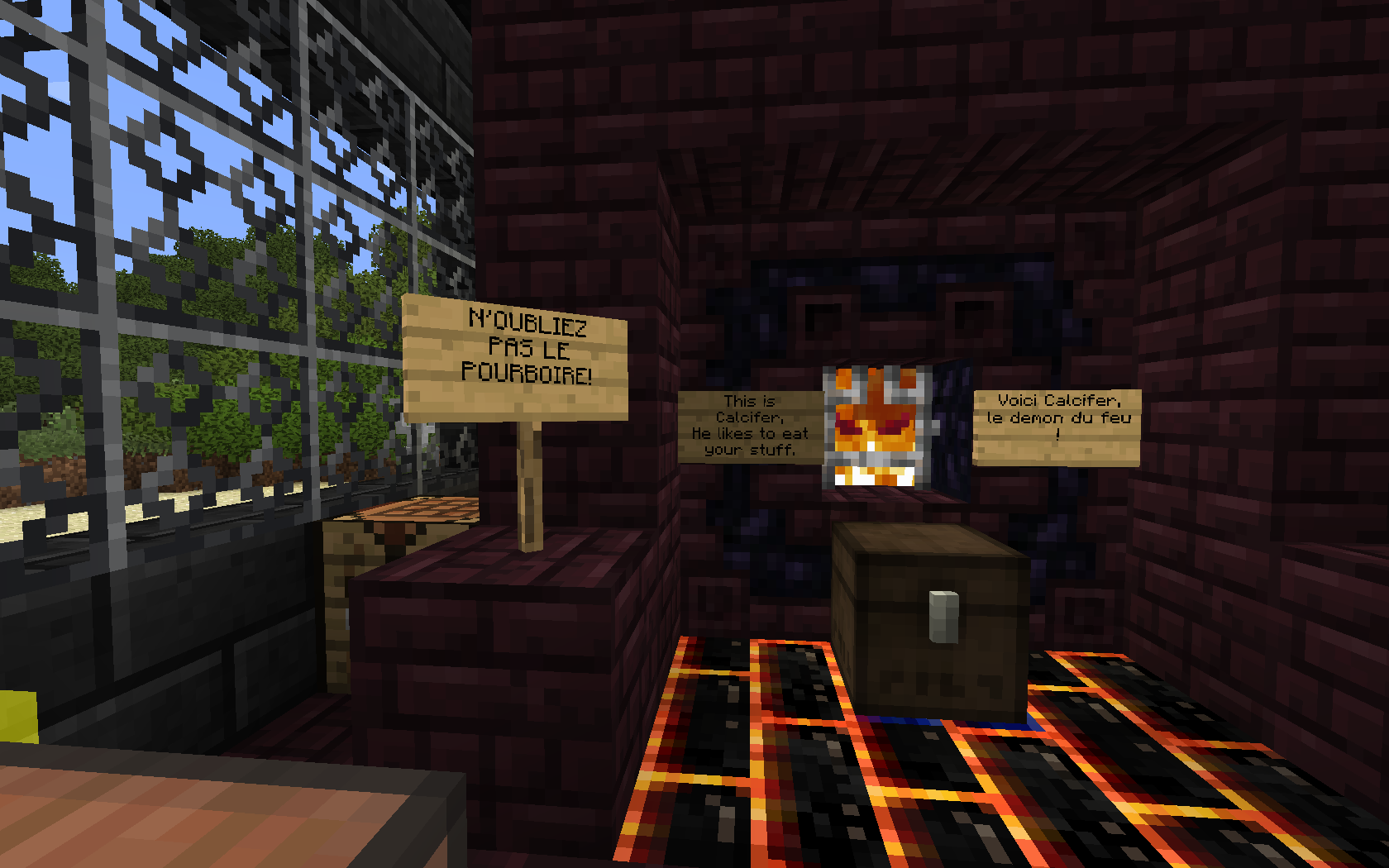
Calcifer, the fire demon held inside the infernal furnace, spits out cooked chicken and chicken nuggets at a leisurely pace. Thank you Thaumcraft or this would never have been possible.
Notes
- Other than the video game-specific rules inherent to Minecraft, the mLab server has socially-enforced rules, also called “local rules”, rules that players create within their own social groups, or by the server’s host. BFC’s interactions (as a project and as a digital structure) with some of these local rules was sometimes a bit rocky.
- It is interesting to see how players take to industrialization and automation. Some players shy away from it, perhaps because it makes the game too easy too fast (as if playing on “godmode”/creative mode). Other players spend all their time creating machines that never stop working. There are also ideological reasons against industrialization that have been carried over from the non-digital world.
- For more conclusive conclusions about the BFC and how it was built, you can also check out my slides here from a presentation on the topic last spring.
Bonus Section! Quotes from various mLab Players about BFC:
These quotes are from mLab players not attached to the project. I asked them if they would be willing to share a sentence (or more) on what they thought of the BFC on their server. These quotes are presented in no particular order, anonymously, and with some editing to preserve clarity. I thought it would be useful to catalogue these responses for posterity.
- I was personally disturbed by the ownership of the server that was displayed, and wanted nothing to do with the project.
- I think it’s an interesting idea. it fits with the spirit of factorization (making players’ life easier) on the server, however it never became part of the ecosystem. I think it’s partially because we [the server’s players] didn’t build it. Hired workforces built it and that didn’t blend organically with the “society” on the server. The group of people that play on the server are a liberal bunch who frown upon big corporations in real life and that translates to the game. This server is peculiar because we tried to take into account the NPC (non playable characters) and in that context, having a fast food restaurant mercilessly massacring chickens by the thousands is not something people will support.
- I saw it as literally nothing more than a slightly eyesoreish source of free murder-flavoured nutrition.
-
[On the subject of] the actual building and machine itself I don’t have much to say really. It’s kind of nice but also it’s really weird how it’s just an exact copy of an existing design. It ignores all the ways in which the mods on the server could make accomplishing the task easier or more interesting. What I thought was kind of weird was mainly these things: because the server was the site of this research project it raised some issues about where the ownership of the server rested and who was working for who, which only got more confusing as time went on as new people were hired and the server was taken out of the mLab, without the knowledge of the players or the original maintainer of the server. Because the server was moved to a new locked location, the server’s performance dropped, players stopped going online. Eventually the server was returned, but the entire ordeal seems illustrative of the way academia appropriates students’ work. [Because of all the issues with regards to the ownership of the server] I didn’t keep a super close eye on the project itself but it seems that undergrads were basically hired to build the fried chicken thing after a detailed blueprint [and] some of them hadn’t even played minecraft before? I’m not sure what the goal of the study was really, but I hope it wasn’t to study anything representative of typical minecraft play. You had people playing on the server not because they enjoy it but because it’s a job, and instructions can restrict the creative freedom that is kind of a big part of Minecraft. This is a super obvious example of alienation in the Marxist sense.
- I have only known the BFC as a ruin which makes it seem kind of legendary. I’ve been pillaging it for building supplies.
The post Big Fried Chicken Post-Mortem appeared first on &.
]]>The post Harry Potter: Towards Fan-made transmedia…or not? appeared first on &.
]]>
In my last week note I looked at fan made Pokémon Minecraft servers and their inability to portray a realistic depiction of any of the Pokémon medias including, but not limited to, the game, the anime, and the manga. The fan games, I argued, did not have the competency to create fully functional environments, which was a detriment to the feeling of immersion. The battle system, level distribution on the map, and the controls removed our ability to remain immersed in the environment as we were constantly being reminded of its errors. This time my focus is on a Minecraft mod called Potterworld that is based on JK Rowling’s Harry Potter. I previously argued that this server goes beyond recreating the iconic structures of the Harry Potter world, and that it brings the player directly into this world. However, while it does create a more immersive experience, the player must suspend their belief of the real narrative.
What makes this mod stand apart from other Harry Potter servers (and many Minecraft ones) is not only the beauty and picturesque perfection of the scenic elements, but the shear amount of moderators. The game works well because it is brilliantly created, and well managed. While it does allow some dialogue and continuation of the film and novel narrative, it undeniably falls short.
The Server and Ranking Up
This server boast a staffed of over 70 members, including professors, prefects, developers, architects and the headmaster. Members must apply for these positions after having completed their courses at Hogwarts, or for the developing team, a portfolio of work done using various programs. For example, the Potterworld FAQ link includes this description of the stated responsibilities of a prefect .
Additionally, players can view the extended list of requirements to become a developer, or other staff members, listed afterwards. The server administrator expects strong candidates with experience to help create this environment and maintain it. And this, with no cash incentive listed.
To advance as a player in this server, one must attend class, perform well and pass competency examinations. Upon successful completion of the examination, the student can move up the rank to the next level and so on and so forth until they graduate. At that point, they may apply to become professors, prefects, or decide to become Aurors or Deatheaters, etc.
Creating an area for extrinsic narratives?
Kurt Squire and Henry Jenkins, renown game researchers, explains “everything there [in the game] was put on the screen for some purpose – shaping the game play or contributing to the mood and atmosphere or encouraging performance, playfulness, competition, or collaboration. If games tell stories, they do so by organizing spatial features” (Jenkens & Squire 1). Potterworld brings “Hogwarts School of Witchcraft and Wizardry” to life through the use of Minecraft. The server uses plugins to change the look of the regular game and create environments that look incredibly similar to the film version. This is due in part to Minecraft being a sandbox, where one can create anything one wants, but also the sheer fan devotion. The staff’s ability to recreate the “Harry Potter” environments encourages the players to role-play—interacting with the game as though they themselves really attended the school and creating their own narratives with the help of other players. While players can role-play using messaging software such as Skype or through email, this server allows players to interact in a familiar world and create their own custom avatars that will be able to navigate and explore the world. It works because “the game constructs the story time as synchronous with narrative time and reading/viewing time: the story time is now” (Juul 7). This allows the players to feel more immersed than they would using messaging software and allows them to interact differently than “fan fiction”.
While “fan fiction” allows writers to create their own continuation of a series and to explore new grounds, it remains something that is more personal than an online game server. The author can decide not to read reviews or acknowledge suggestions and instead, write what they desire. On a public server, one never knows what will happen. The game allows the player to imagine not only what it would look and sound like to live in the Harry Potter universe, but also to see and experience it for themselves from a third person perspective; “the result is not realism but rather immersiveness” (Jenkins & Squire 6). The third person view allows the player to interact with the environment and players more directly. They are their avatars. This is their life.
Other Player Experienced
Having played on the server myself, I wondered how other players – notably those more interested in “Harry Potter”—would feel about the server. I had fellow student and game researcher Saeed Afzal play the game at Concordia’s TAG facilities.
“My experience with the Potterworld server, though brief, was rich and immersive. Through the use of mods, texture packs, written narratives, and interface changes, the creators managed to transform Minecraft into a nearly unrecognizable version of itself, one that simulated the world of Harry Potter in a number of sophisticated ways”
He explains that he had a positive overall experience in seeing and interacting with the architectural design of the environment from a third-person view. He explains that the buildings were “amazingly well done and followed very closely the designs from the Harry Potter movies”.
Everything from tapping on the wall of the Leaky Cauldron, getting your wizarding robes, and taking the train to Hogwarts was included. While they could have chosen to just drop the players straight into Hogwarts, this preamble added a richness to the narrative and another layer of immersion.
Afzal has previous experience playing licenced Harry Potter games, but said he felt more excitement in playing on this server:
He felt awed when he saw Hogwarts for the first time and explain that the beauty of the server and its mechanic thrilled him.
You feel less like a Minecraft player and more like an actual resident of the Harry Potter universe. Having played commercial Harry Potter games in the past, I can say that my favourite parts of those games were always when the player (usually embodying the character Harry Potter) was allowed to roam the grounds of Hogwarts and attend classes in whichever order they pleased. The gameplay during those points in the story was decidedly open-ended and light on plot progression, allowing the player to truly experience a ‘normal’ day as a Hogwarts student. This server aims to embody that experience, without the contrivances of the main series’ narrative – you get to simply be immersed in the world of Hogwarts and allow your own emergent narratives to blossom.
(Afzal, March 29th 2015)
Although the server does not boast a direct story line as the commercial games do, the server has since begun hosting live events where students—not Harry Potter and his friends—can take on the Dark Lord, protect Hogwarts and save their headmaster from death. These events are posted on their website’s main page. See the comments to view player enthusiasm.
On the other hand, while the server is beautifully crafted, it still falls shorts— it fails to illustrate an ongoing trans-media narrative. The server is more akin to “The Sims”, simulating the world of “Harry Potter,” and not necessarily a continuation of the narrative.
Narrative and Simulation
The Potterworld server is easily capable of functioning as a set up for multi-player role-playing. Players are capable of using the server, and all of its plugins, as tools for creating their own player generated narratives. They can enact the rivalry between the different factions, can duel, and can play the role of regular Hogwarts students, professors, and enemies—anything they can imagine. The player can even decide to find a job, rent a house or shop, or even buy a home thanks to the wealth system which uses the famous Harry Potter coins. The players are not forced to participate in the actual courses; however if they do not, they cannot advance in society. This brings up questions of ideology and of what this server depicts as a successful witch/wizard: one must absolutely participate in courses, study, pass and obey their superiors to succeed in the world and be more than just a “muggle”. The world closely resembles our own world in that players interact realistically with each other according to rules they would have learned in schools: raise your hand before speaking in class, be respectful towards other students and staff, do not vandalize, etc. Players can use these environments to “do their own dramatic reenactments of scenes from the movie or to create, gasp, their own ‘fanfiction’” (Jenkins 165). The rules allow them to participate in the narrative on a much deeper level: they know what to expect, and staff members will deal with those who breach protocol (“prefects”, “Staff”, “Professor” or the “Headmaster” himself). By naming the moderators according to the franchise itself, the game allows the players to feel more immersed and so when they have a problem, players need not ask for a moderator, but for a “prefect” to come and settle a dispute, all the while remaining immersed in their fictive narrative. This server, to rephrase Jenkins on the Star Wars game, shows “what life would be like” for a witch/wizard attending Hogwarts (Jenkins 106).
However, many factors ruin this sense of immersion. The game itself is a simulation that relies on the players’ knowledge of the franchise. It is this “familiarity with [the] basic plot structure [that] allows script writers to skip over transitional or expository sequences, throwing us directly into the heart of the action” (Jenkins 120). But by doing so, it removes the “real” narrative as seen in the books and films. The player is left with clay that they can then mold to create their own narratives.
Other than being a simulation, the game demands that the player overlook certain game mechanics. The server is huge and can host over 300 players at the same time. The sheer size of each map and players causes extreme lag (player avatar lag and block lag). When a player goes from one map to another it can take several minutes before the scenery appears. Meanwhile, the avatar is sluggish and the screen glitches. This even happens with a higher-end gaming desktop. And if the player tries to explore out of the map bounds, they walk into invisible walls that cannot be broken down. Another glaring issue, that players do not appear to notice, is the course system. To find the dates and times of classes, the student-player must go to the official website and check the schedule of class. This creates a feeling compatible to that of attending a “real” online course. There are also a particular set of rules for attending classes that one can obtain from the website:
To experience Potterworld completely, the student must frequent the website as much as the game server for rules, new plugins and news about the live events happening around campus.
In addition, the student must attend class and do the required homework and exams to pass and move on to the next level. To go to the class the player must either click a link that appears in the chat box or go to a sign that brings them there. It would have been more realistic (both to the Harry Potter world, the player-narratives, and the online Minecraft school experience) if the magnificent structure that looks like Hogwarts also had actual class rooms with doors instead of a sign system (opening the classroom door for instance could have been the portal to the classroom map).
Another problem is the way in which students communicate. Video game scholar Drachen suggests that researchers should study communicative patterns to notice when players are most immersed (Drachen 34). In the real world, students can only hear those closest to them and can thus have private conversations (or listen to gossip). In Potterworld, there are so many players typing at once that it is easy for a message to be overlooked. Even whispering (sending someone a message only they can see) is difficult as the text can be lost in the flow of other comments. A way to offshoot this problem would be to create groups with friends and use a voice-based application such as Skype to communicate. However, if the player also wants to interact with other players outside of their group, it could create a schism between the two messaging systems.
For the moment, when there are many people using the chat box, it can become difficult to communicate with the on-site prefect or staff member if a problem occurs. The player could just head to the website and file a complaint directly – but again, this ruins the immersion. My own experience with prefects has been good: when you first arrive on the server, you are classified as a “muggle” and the prefect’s job is to come and escort you to Hogwarts where you will be sorted and then be left to your own devices. They maintain a high level of communication, constantly making sure that you are “ok” and to “follow” them. However, one must keep their eyes fixed on the chat box, or they could miss a vital step.
Another interesting factor in this server is the ability to turn play into work that the players want to do—and apply to do. “Staff” members are no longer just players, but workers. Yee brilliantly says “Ultimately, the blurring of work and play begs the question—what does fun really mean?” (Yee 71). The server administrators have specifically changed the names and roles of moderators to create a form of player-labour. The player is happy as they are “prefects”, elite members of the Harry Potter world – and they take on the tasks as set in the books and films. They are thus playing at working: helping other players as their position demands, taking difficult decisions and generally making sure players act according to the established rules.
The Server Works Unconsciously for the Corporation
While the system does have flaws that make it difficult to classify as a trans-media narrative, it does continue to support it. Jenkins’ states “any given product is a point of entry into the franchise as a whole. Reading across the media sustains a depth of experience that motivates more consumption” (Jenkins 96). By playing on this server and sharing it with friends, players are unconscious consumers working for the company by “offering new levels of insight and experience [that] refreshes the franchise and sustains consumer loyalty” (Jenkins 96). Fan-fiction and player-created servers create more products that fans may consume, keeping them interested and susceptible to the franchise. The fans keep the franchise and narrative alive, allowing for the possibility of new narratives to surface in the future (J.K. Rowling has stated the possibility of new stories in the Harry Potter universe). These fans unknowingly create a market where the franchises can easily determine the viability of new projects. If franchise owners know that thousands of fans consume fan fiction and create their own servers to play those narratives, perhaps they will create new information in the forms of manuals, character sheets, early drafts of the books, and new toys such as plushies, games, etc. “What’s clear” explains Yee, “is that video games are blurring the boundaries between work and play very rapidly” (Yee 70).
Conclusion
In the end, this server is amazing and really makes the player feel like they are immersed in the world of Harry Potter. However, it is a simulation of going to school that teaches certain ideologies about school and society. In effect, the player is not playing a game, but playing at being a student and living in a different world. The maps are well constructed and reflect what players would have seen in the films. However, the sense of immersion is easily broken when players go from one map to another—the screen, world, and avatar lag—reminding the player that they are indeed playing on a server. To attend courses one must click links or signs, and the primary method of communication is always backlogged thanks to the three hundred players that can play at once. Bogost has said “We ought not to be satisfied. That’s the price of getting to make a living studying television, or videogames, or even Shakespeare” (Bogost np). But if we are not to ever be satisfied, we will never reach an end—we will always find fault with any aspect of media. Thus, is it even possible to create ongoing narratives that smoothly run from one media to another? Can the fan ever achieve this without the franchise’s backing? If our job is always to dig deeper and never be satisfied, won’t we always come up with reasons why something does not work? In all cases, the server has more chance than the Pokémon server at creating a trans-media narrative, but leads to questions about play-labour. Jenkins explains that media producers can obtain the most fan loyalty when they allow them (the fans) to have a part in the creation of the trans-media narratives “giving them some stake in the survival of the franchise […] creating a space where they can make their own creative contributions, and recognizing the best work that emerges” (Jenkins 168). These spaces can become “places where diverse groups of individuals with shared interests join together, where groups must negotiate norms, where novices are mentored by more experienced community members, where teamwork enables all to benefit from the different skills of group members, and where collective problem solving leads to collective intelligence” (Kahne 7). By allowing consumers to create their own spaces, corporations only further their interest: the players can feel included and part of the community, and will continue to consume whatever the corporation puts out in the market. Thus, fan created medias generate interest that keeps the fans entertained and thus helps prologue the franchise.
Bogost, Ian. “Against Aca-Fandom.” Bogost. 29 July 2010. Web. 1 April 2015.
Drachen, Anders, and Jonas Heide Smith. “Player Talk-The Functions of Communication in Multiplayer Role-Playing Games.” ACM Computers in Entertainment 6.4 (Dec 2008): 1-36. Google Scholar. Web. 2 January 2015.
Jenkins, Henry. Convergence Culture : Where Old and New Media Collide. New York: New York University Press, 2006.
Jenkins, Henry, and Kurt Squire. “The Art of Contested Spaces.”
Juul, Jesper. “Games Telling Stories? A Brief Note on Games and Narratives.” Game Studies 1.1 (July 2001).
Kahne, Joseph. The civic potential of video games. MIT Press, 2008.
Yee, Nick. “The Labor of Fun How Video Games Blur the Boundaries of Work and Play.” Games and Culture 1.1 (2006): 68-71.
The post Harry Potter: Towards Fan-made transmedia…or not? appeared first on &.
]]>The post A Squirrel Is Stuck Between An Ocean And A Hard Place appeared first on &.
]]>Approaches to AI in virtual systems and Minecraft
Yesterday, while wandering around the mLab and procrastinating between deciding to go to bed at a reasonable hour or stay up and work on midterms, I came across something I have seen many times in my Minecraft play. A small non-agressive mob was stuck between the ocean and a ledge on a cliff, with no means of escape. By small, I mean a mob that is smaller than half of a game “block” (Minecraft’s “standard” unity of measurement) and in this particular case the mob was a squirrel, a colourful addition to Minecraft’s bestiary from one of the mLab’s 130 odd mods. Either it spawned on the ledge or had fallen there, and because of its small size, it was stuck on the ledge, doomed to fall into the ocean if it tried to escape.
Thus the squirrel simply sat there.
In meatspace, or the real world, the squirrel would die of starvation if the squirrel had found itself on that ledge. Perhaps the meatspace squirrel would be motivated by some instinct to attempt to climb the impossibly steep dirt and rock cliff facade.
But in Minecraft, the squirrel is doomed to its fate until the system despawns the chunk of server land that this drama is unfolding upon. The squirrel is doomed to sit there on that ledge, ostensibly for as long as the server chunk is loaded, for the rest of time.
Because I wasn’t thinking of taking screenshots of the stranded Minecraft squirrel last night (sleep deprivation, tsk tsk) I decided to illustrate the situation for you with a sketch:
The squirrel is in a tough situation. As I was fluttering about the server, and I saw this squirrel, my immediate impulse was to dig a little path into the cliff’s rocky face, so that the squirrel could escape to the woods above and go about its squirrelly business.
Why would I do that? Why so much empathy for a Minecraft squirrel?
The squirrel, after all, is just an artefact of computer code meant to do things that I, as a human playing Minecraft, can interpret as squirrel activity. This, and its aesthetic, cue my brain into seeing a “squirrel” as the manifestation of a bit of computer code. Without my interpretation and visual interaction with the squirrel, is that bit of computer code really a squirrel, or just a bit of computer code? If no one is around to interpret the squirrel’s immobile waiting on that rock ledge as panic and despair, is the squirrel really in any danger?
From the perspective of the strip of code governing the squirrel’s activity, that squirrel’s activity makes perfect sense. The computer code has judged the situation and asserted: “There is danger in every direction, but right here is safe. So the squirrel object won’t move. Success!”
It is my interpretation that the squirrel is stuck, and because I think a squirrel should be frolicking about in the woods, I have this idea that the squirrel’s activity sitting on a ledge is somehow unsatisfactory. I am moved to change the circumstances and give the squirrel an opportunity to rectify its activity.
In an interview between filmmaker Gina Harazsti and Dr Darren Wershler (I was lucky enough to see a preview of the footage last week) professor Wershler asserts that the reason we care so much about “cute mobs” in Minecraft is because of nostalgia. We don’t care about skeletons or creepers stuck on ledges with nowhere to go. We are nostalgic about squirrels in Minecraft because we are nostalgic about real squirrels. Is it that we want to play out a fantasy as a human emissary to an animal society in danger? There’s a lot of writing on “cuteness” and its evolutionary function. Are we playing out real-world biases via nonhuman mobs in Minecraft – because the squirrel has a fluffy tail and is so small, are we confusing two very different nonhuman “creatures” – one of flesh and fur, the other an artefact of software.

SO CUTE AND FLUFFFEEEEEEEEEE
When artificial intelligence research and cognitive science were both in their infancy, a piecemeal approach was developed by some researchers who were hoping investigations of artificial intelligence would be a useful tool to reproduce “human” intelligence. In his report Intelligence without representation by Rodney A. Brooks, where Brooks describes research done at the Artificial Intelligence Laboratory of the Massachusetts Institute of Technology, the paper asserts flat out: “Artificial intelligence started as a field whose goal was to replicate human level intelligence in a machine.” This original goal was gargantuan – but there was hope that in isolating the different “pieces” or components of cognition, we could replicate them with mechanical processes whose “brains” would be software. Brooks’ report was published in 1987 and as such presents a particular picture in time for artificial intelligence research – however I have found it interesting to compare some of the points he makes on the breakdown of artificial intelligence into units performing various functions, to the nonhumans of Minecraft.
I examined the points Brooks makes about artificial intelligence research concerned with making robots in the real world, rather than making software interacting in a virtual space. He mentions game spaces with the famous “blocks world” example :
In the late sixties and early seventies the blocks world became a popular domain for AI research. It had a uniform and simple semantics. The key to success was to represent the state of the world completely and explicitly. Search techniques could then be used for planning within this well-understood world. Learning could also be done within the blocks world; there were only a few simple concepts worth learning and they could be captured by enumerating the set of subexpressions which must be contained in any formal description of a world including an instance of the concept.
Brooks however criticizes the heuristic problem solving methodologies used in the “blocks world”, stating they are too simple for serious, epistemological artificial intelligence research. It is perhaps difficult to conceptualize what the “blocks world” was, as it was for me when I first started investigating it, and I stumbled upon SHRDLU – an early natural language understanding computer program. It is basically a programming software that learns to make “blocks” of concepts containing subexpressions. For instance, in a “blocks world” software, you could teach the software that chicken is a type of meat, and that meat is a concept “block” worth remembering for further interactions. An example from SHRDLU illustrates this:
Person: PICK UP A BIG RED BLOCK.
Computer: OK. (does it)
Person: GRASP THE PYRAMID.
Computer: I DON'T UNDERSTAND WHICH PYRAMID YOU MEAN.
Person: FIND A BLOCK WHICH IS TALLER THAN THE ONE YOU ARE HOLDING AND PUT IT INTO THE BOX.
Computer: BY "IT", I ASSUME YOU MEAN THE BLOCK WHICH IS TALLER THAN THE ONE I AM HOLDING.
Computer: OK. (does it)Person: WHAT DOES THE BOX CONTAIN?
Computer: THE BLUE PYRAMID AND THE BLUE BLOCK.
Person: WHAT IS THE PYRAMID SUPPORTED BY?
Computer: THE BOX.
Person: HOW MANY BLOCKS ARE NOT IN THE BOX?
Computer: FOUR OF THEM.
Person: IS AT LEAST ONE OF THEM NARROWER THAN THE ONE WHICH I TOLD YOU TO PICK UP?
Computer: YES, THE RED CUBE.
Person: IS IT SUPPORTED?
Computer: YES, BY THE TABLE.
Person: CAN THE TABLE PICK UP BLOCKS?
Computer: NO.
Person: CAN A PYRAMID BE SUPPORTED BY A BLOCK?
Computer: YES.
Person: CAN A PYRAMID SUPPORT A PYRAMID?
Computer: I DON'T KNOW.
Person: STACK UP TWO PYRAMIDS.
Computer: I CAN'T.
Person: WILL YOU PLEASE STACK UP BOTH OF THE RED BLOCKS AND EITHER A GREEN CUBE OR A PYRAMID?
Computer: OK. (does it)
Person: WHICH CUBE IS SITTING ON THE TABLE?
Computer: THE LARGE GREEN ONE WHICH SUPPORTS THE RED PYRAMID.
Person: IS THERE A LARGE BLOCK BEHIND A PYRAMID?
Computer: YES, THREE OF THEM: A LARGE RED ONE, A LARGE GREEN CUBE, AND THE BLUE ONE.
Person: PUT A SMALL ONE ONTO THE GREEN CUBE WHICH SUPPORTS A PYRAMID.
Computer: OK. (does it)
Person: PUT THE LITTLEST PYRAMID ON TOP OF IT.
Computer: OK. (does it)
Person: DOES THE SHORTEST THING THE TALLEST PYRAMID'S SUPPORT SUPPORTS SUPPORT ANYTHING GREEN?
Computer: YES, THE GREEN PYRAMID.
Is the computer software actually learning something? It certainly simulates the process of learning. It knows that it can 1) do an action 2) admit the action is impossible, or that it can 3) answer a question in the affirmative or 4) answer a question in the negative or state 5) admit ignorance. But if you taught the computer thousands of different concepts (cubes, pyramids, pasta, cookies, ducks, stellar cartography) broken down into “blocks” of “knowledge” represented by “strings” – would the computer software actually be able to execute commands other than the 5 outputs available above? The simplifications of the world and the types of input-output available are too far removed from real-world abstractions and complexities to hold any weight.
I return to my Minecraft squirrel drama on the ledge. The squirrel program running inside Minecraft could be having a similar conversation to the one archived by SHRDLU :
Squirrel: I am sitting here.
Computer: You are indeed sitting here.
Squirrel: Should I move forward?
Computer: You should not. There is a vast ocean and you will drown.
Squirrel: Should I move left?
Computer: You should not. There is an ocean there too.
Squirrel: That sucks. Maybe I should move right?
Computer: Nope. Ocean all around, amigo.
Squirrel: Awww man. Shall I move backwards?
Computer: There is a block of earth there.
Squirrel: What about jumping? Can I jump onto the block of earth?
Computer: Alas, you can’t. There is a block of earth there too.
Squirrel: So… I should just sit here?
Computer: Sounds good to me.
The squirrel, like the SHRDLU program, takes “input” from the world (in this case, the computer is controlling what is in the world, but in the SHRDLU program, the world seems largely defined by the human-defined input.) The squirrel program is totally cool just sitting there, because it has gone through its programming and figured out that in order to stay alive (which squirrels in Minecraft apparently like to do) it should stay out of the water. The squirrel will never learn to dig through the earth or climb against the facade to get out. The program is quite content to execute its programming and chill.
So when I feel pangs of sadness that a squirrel is caught on the ledge, that is my human abstraction of what is going on. The squirrel program is actually quite happy where it is. But wouldn’t the squirrel also be quite happy to move around, too? When I’ve watched Minecraft mob patterns, I’ve noticed that almost all creatures feel an impulse to move around. If I unleash a pack of chickens into the wild, they’ll meander away eventually, often splitting off into different directions. Squirrels are similar, bounding away happily in the world. I have dug into the process of “artificial intelligence” in the mobs of Minecraft, I still feel the need to wonder – would the squirrel prefer to be moving, and does it consider that state ideal? I project the human emotion “happiness” onto the bounding squirrels and chickens of Minecraft – but could that be a fanciful description of something actually happening within the hardware.
While I know that aesthetically, I am sympathizing with the squirrels and chickens of Minecraft because they are kind of cute, I also have to wonder if from an artificial intelligence point of view, something deeper may be occurring under the surface. Of course, I can terminate the Minecraft program and walk away from the stranded squirrel completely. Brooks argues that “toys” offer too simplified a domain for serious study, and it is perhaps anachronistically futile to use an AI research paper from 1987 to contemplate upon Minecraft, a game released in 2009.
I am intrigued, reading Brooks, when he lists the engineering methodology behind building Creatures: “completely autonomous mobile agents that co-exist in the world with humans, and are seen by those humans as intelligent beings in their own right.” These artificial organisms would exhibit the following properties:
- Timeliness (as in reaction time)
- Robustness (minor changes in the properties of the world will not lead to a total collapse of the Creature’s activity or behaviour)
- Goals (the Creature should be able to maintain multiple goals, and, depending on the situation, prioritize one goal over another, as well as take advantage of fortuitous opportunities)
- Purpose (a Creature should do something in the world, should have some purpose in being)
In many ways, the Minecraft mobs satisfy these four requirements. The squirrel prioritizes staying alive over bounding about happily, the squirrel would jump up and try to flee if I hit it with my battleaxe, the squirrel reacts if I dig a path in the earth for it to escape the cliff and the squirrel has a purpose : it is a denizen of the forest, and makes the forest complete.
However, where Brooks and I may differ on interpretation of the concept of a Creature is in the words “co-exist in the world with humans” – players may enter the world of Minecraft, but are they really “in” the world of Minecraft? As pieces of software, does the squirrel program really “exist in the world” – is its physical existence as a tiny component of a hardrive a big detractor from its software, virtual manifestation?
The squirrel of Minecraft is an artefact running on the software foundations of a lot of artificial intelligence research. We can pause or “disable” the squirrel program, or the SHRDLU program, and when we re-engage the program it does not restart from scratch necessarily – depending on how Minecraft decides how mobs are loaded and respawned into chunks, that same squirrel may reappear, and reassess that it is still stuck between the ocean and a hard place. But is it really the same squirrel? Is it really manifesting a portion of intelligence? Would it prefer to be bouncing about happily rather than stuck on the ledge?
Or is this all besides the point – is the more interesting investigation with regards to how the player responds to the situation. So I ask you the question: if you found the squirrel stranded on the ledge, would you do anything about it? And why?
The post A Squirrel Is Stuck Between An Ocean And A Hard Place appeared first on &.
]]>The post On PETA and the appropriation of anti #GAMERGATE rhetoric (in Minecraft) appeared first on &.
]]>
In past weeknotes, I discussed both the ethics of farming in Minecraft, as well as the role played by the “larger Minecraft community” in shaping culture.
I broke down some of the ideological assumptions behind Big Fried Chicken Company, addressing specifically consumerism, fast food consumption, and industrialization. I wrote that we cannot blindly create industrial structures on Minecraft servers, ignoring the way in which we treat, even pixelated, helpless creatures, because that further obfuscates our own real-world relationship with our food.
Speaking of the real world, PETA just came out with its “Animal Utopia Server“. An interesting idea in theory, PETA has created a Minecraft world in which animals come first. It plans to use the server as a platform to teach about the history of animal abuse at the hands of humanity.
As a writer interested in the ethics of food in Minecraft, this move by PETA attracted my attention immediately when Saeed shared the article with me. This tactic, creating an educational Minecraft server where animals live harmoniously outside the rhythms of human consumptions, seemed rather different than their usual tactics.
PETA has a dark history of co-opting tragedies and painful histories of oppression for their shock value. Members of PETA have dressed up as the KKK to pass out flyers at rallies, as well as appropriated stories of lynching and slavery to sell advertisements. Their blazen, thoughtless appropriation of racist oppression is not the only thing PETA is known for: one of their favoured techniques is using the naked female body in order to emphasize their ideology:


 PETA’s history of walking all over women is well documented – the above images were sourced from Business Insider.
PETA’s history of walking all over women is well documented – the above images were sourced from Business Insider.
Compared to the above gallery, a Minecraft server seems like a reasonable, thoughtful approach. Upon further research, I came across this article by Brian Crecente quoting PETA’s Joel Bartlett, director of marketing innovation for the group:
If this rhetoric sounds familiar to those following Gamergate these past few months, that’s because it is.
Some gamers would like it both ways: they want everyone to take their medium seriously, but they don’t want anyone to challenge their political assumptions or call into question the way games treat people who don’t look and think like them. They hate and fear a world where games are truly made by and for everyone, where women make up a majority of the gaming audience, where a trans woman dominates one of the world’s great eSports. (Source)
There are plenty of excellent resources available discussing the right-wing, reactionary rhetoric of Gamergate. Arthur Chu at the Daily Beast wrote an excellent overview of the precedent for Culture Wars in the United States titled Of Gamers, Gates, and Disco Demolition: The Roots of Reactionary Rage.
One of my favourite such posts is by Carolyn Jong, titled GamerGate and The Right, which discusses in detail the methodology behind the ideological warfare of Gamergate. Jong’s breakdown of the history behind the tactics used by Gamergate is excellent, drawing the movement’s roots back not only to the likes of Eliot Rodger but even closer to home here in Montréal, and beyond. The following quote steals some of Jong’s thunder, so I highly recommend reading her entire post:
Elliot Rodger blamed women for his suffering, and for his inability to live up to the impossible standards of patriarchy, before killing 6 people and himself. Marc Lépine claimed he was “fighting feminism” when he murdered 14 people and committed suicide at École Polytechnique.
These might seem like isolated cases, but they all fall back on the same old myths about women and minoritized groups that are perpetuated by the mainstream media and supported by structural oppression. Every time we use a sexist slur, or dismiss the experiences of women and minorities, or make a crack about “feminazis,” or dehumanize someone who is struggling with poverty, or blame unemployment on immigrants, we contribute to a toxic culture that serves as a breeding ground for hate groups and right-wing extremism. People on both sides are suffering, but it is ultimately the people who are already disempowered, who are already vulnerable, that will bear the brunt of it, regardless of which side they identify with.
In using that particular wording, PETA has essentially co-opted the abuse that Zoe Quinn, Anita Sarkeesian, Brianna Wu, and countless others have suffered in the name of Gamergate. PETA has criticised videogames before, as well as used videogames to create messages in the past, but this Minecraft server has little to do with Minecraft and more to do with jumping into the Gamergate fray. On the surface, it may seem that they are using anti-Gamergate rhetoric in order to further animal rights – but under the surface they are exploiting the abuse of women in order to further their own ideological marketing.
The post On PETA and the appropriation of anti #GAMERGATE rhetoric (in Minecraft) appeared first on &.
]]>The post BFC – BigFriedChicken’s Cook and Sort machine appeared first on &.
]]>BFC – BigFriedChicken’s Cook and Sort machine
How does the BFC Vanilla edition sort cooked chicken, feathers, and eggs into specific chests?
An industrial cooking and sorting machine. This device is the soul of the BFC and automates the process of collecting, cooking, sorting and finally storing cooked chicken, feathers, eggs and any anomalies (ie: dirt blocks, uncooked chicken, etc) into containers (chests).
To begin the process, the chicken brood is enclosed over hoppers (in our case, 3), these hoppers are placed so that they output towards the next hopper in line, with the final hopper output dropping down into a dispenser.
The dispenser will not shoot out eggs unless it is powered.
The mechanism that powers the dispenser is a circuit designed to launch eggs once they enter the dispenser through the hopper chain. The circuit uses a comparator in the “compare signal strength” mode in order to compare the state of the dispenser with the feedback signal to detect incoming eggs and to power the dispenser to fire them.
In “compare signal strength”, the comparator is off but
and so it is important that the comparator is properly configured so that its rear input faces the dispenser’s rear (figure 1).
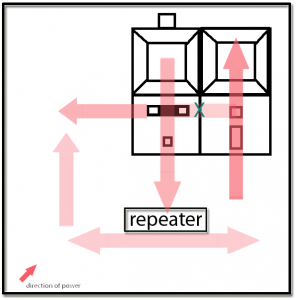
Figure 2. The arrows show the circulation of power. The comparator will try and compare values on either side of it but cannot compare the repeater on the side because its power follows a linear tract. The X shows that the connection is not established and therefore ignored.
When there are objects in the dispenser, the comparator will compare that amount to its side inputs, these being red stone wire and a repeater. The comparator does not compare the signal to the repeater because the repeater’s output does not face the comparator (figure 2).
The comparator compares the value in the dispenser to the red stone circuit to its left. A repeater, its input towards the comparator, controls the rate at which the signal passes through the red stone circuit to ensure that the comparator’s signal does not instantaneously turn on the red stone wiring. This ensures that the comparator’s signal will be stronger than the red stone circuit.
Ex: if the dispenser has one egg, the comparator has a value of 1. It checks it’s side inputs and the red stone circuit will have a value of 0. 1 is bigger than 0, and therefore the Comparator turns on.
In the second example, I explain one of the reasons for using a repeater directly after the comparator. Although not necessary, the repeater ensures that the red stone does not instantaneously power on when the comparator does.
Ex 2: the dispenser has one egg, the comparator has a value of 1. It checks it’s side input and server lag or a malfunctions, and because the system does not have a repeater to delay the signal, its value also appear as 1. 1 is not greater than 1 and therefore, no power. Without power, the dispenser does not do anything.
When the comparator turn on, a signal passes through the repeater, which delays it by a fraction of a second, and circulates both left and right on the red stone circuitry. On the left, the signal powers the red stone adjacent to the comparator and powers the red stone to 1. As we have seen, when the comparator and the red stone next to it have the same value, the system turns off.
Simultaneously, the right side powers a repeater, that powers a block which in turn powers the dispenser which shoots out the object (egg). By shooting out the object, the dispenser value decreases and as a result the comparator turns off.
There is no danger of overflow of eggs into the dispenser because the hoppers only ever allow one item to transfer at a time. This ensure that this system constantly turns on and then off for each egg.
The dispenser shoots the eggs into an enclosure to produce chicks and from them, cooked chicken. The eggs are launched into an enclosed chamber over a hopper with a half slab, some hatch as chicks. The chicks are therefore elevated above the regular block level and only have a half slab area to circulate. Since chicks are only half a block high, they can move freely. A full block above the hopper, contains lava produced by a dispenser (figure 3). This dispenser is powered by toggling a button – while ON it produces the lava, and OFF it retracts the lava. Since a fully matured chicken is a block in size, once the chicks grow up, they surpass their half slab of livable circulation and the lava cooks them. In most cases the dropped item, cooked chicken and feathers, will fall through the half slab and into the hopper underneath it which is positioned with its output towards a chest. In some cases, the dropped item will burn.
A row of hoppers aligned with their outputs towards the next in line, lies beneath the chest (figure 4). The hopper pulls the items out of the chest and down the conveyer belt. The last hopper at the end of the belt has its output leading down into another hopper that leads down and into a chest. This chest, at the end of the line, will collect any surplus items that are not configured in the regular sorting system.

Figure 4. The conveyor belt hoppers each have their output leading towards the next hopper. This ensures that items move fluidly.
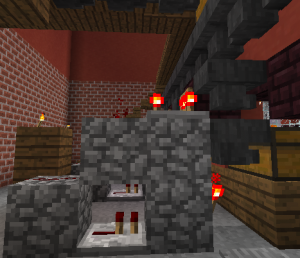
Figure 5. Conveyor belt hoppers, sorting hoppers, and chest. Note that the red torch is ON, at the bottom, to indicate that the hopper is locked and will not pass down items.
Beneath this conveyor belt of hoppers are three evenly spaced red stone sorting circuits designed to store specific items into their respective chests. The system works by taking advantage of a hoppers ability to lock when powered and to draw similar items within its inventory and use it to power red stone. In this way, when items travel through the conveyer belt, specific items (in our case feathers, chickens and eggs), will fall down into a lower hopper when they match (figure 5).
Hoppers work by shifting items in it towards its out put. In the assembly line, the items are pushed left, but, if there is a hopper underneath a hopper, items will fall down. When a hopper is empty, any items may travel through it, such is the case for the last chest on the conveyer belt. This chest collects any material our three configured hoppers will not collect. These configured hopper’s slots have been filled with 21 sticks and one chicken/feather/egg which is located in the first slot.
When a hopper’s slots are filled, it will try and collect additional material first through the first slot. For the sorting machine to function properly, one chicken (or desired item to be sorted) must be at the beginning of the slot line so that the hopper will constantly look for it. This hopper is specifically designed to allow only one item to travel through it (and into the next hopper below it which deposes it into a chest) at a time. This ensures that the sorting machine will never collect any sticks, but always the primary slot item.

Figure 6.
Just in case,
ex: 1 chicken, 6 sticks, 5 sticks, 5 sticks, 5 sticks (figure 6)
One chicken from the conveyer belt falls down into this hopper: 1 new chicken + old chicken = one chicken falls down into the lower hopper and into the chest before the hopper locks again (I will explain that process shortly). We still have 1 chicken, 6 sticks, 5 sticks, 5 sticks, 5 sticks and therefore the sorting machine will continue looking for chickens and not sticks.
Alright, so we now understand that the cooker function with a “compare signal strength” comparator coupled with repeaters to launch eggs into an enclosure that will hatch chicks that will cook when they mature into chickens. The cooked chicken then falls into a hopper located under the enclosure, into a chest, and then is sucked into the hopper conveyer belt which will then sort them into four categories: chicken, feathers, eggs and everything else. But how does the sorter work? Where does it obtain its power and ability to transfer only one item at a time down from the sorting hopper into the lower hopper and into the chest? Why don’t all the items in the sorting hopper (1 chicken, 6 sticks, 5 sticks, 5 sticks, 5 sticks) not fall down also? The answer, a comparator and repeater process again.

Figure 7. The comparator is on “Measure block state” mode. Out put towards the red stone wire. It is difficult to see, but sparks are coming out of the first block to show that it is powered. The second block of red stone wiring is not sparking.
Instead of using a “Compare signal strength” (CSS) comparator as we did with the cooking section of the BFC, the sorting area utilities a “measure block state”(MBS) comparator and its output facing two blocks of red stone wire (our circuit material). Unlike the CSS, the MBS “will treat certain blocks behind it as power sources and output a signal strength proportional to the block’s state.” This allows the user to control how many items fall into the lower hopper, and ensures that the sorting hopper does not empty itself out into the lower hopper. But how?
Alright, so the hopper is locked using a red stone torch set ON. The comparator has only enough power to power ONE of the red stone wires (figure 7). When one cooked chicken falls down into the sorting hopper, the additional power of one chicken will power the second red stone wire block, which will activate the repeater that will turn off the RED STONE TORCH long enough to allow one item to fall down into the unlocked hopper before locking again. The repeater ensures that only one item falls down at a time so that the sorting hopper does not empty itself out.
How does the comparator generate energy? Why does it only power one block when we have 1 chicken, 6 sticks, 5 sticks, 5 sticks, 5 sticks, but two blocks when there are two chickens?
It is not readily obvious how this works, but a member of the Minecraft Wiki community shared this mathematical formula to explain how to calculate signal strength from any given item.
signal strength = truncate(1 + ((sum of all slots’ fullnesses) / number of slots in container) * 14)
1 + ((sum of all slots’ fullness)/number of slots in container) x 14 = amount of red stone blocks that will be powered.
To begin, we must calculate the amount of items in our hopper and divide each by their full amount. In our case, the items we are using all stack up to a maximum of 64.
1/64 + 6/64 + 5/64 + 5/64 + 5/64 = 22/64
22/64 = 0.34375
0.34375 divided by amount of slots in a hopper (5) = 0.06875
0.06875 x 14 = 0.9625
0.9625 + 1 = 1.9625
Truncate this number and we get 1
therefore, this formula powers 1 red stone block.
It is important that the non-truncated number is 1.9625 because with an additional chicken, the truncate is 2.
22/64 + 1/64 = 23/64
= 0.359375
= 0.071875
= 1.00625
= 2.0624
truncate 2
With the second block powered, the repeater turns off the torch long enough for one chicken to fall down into the chest and return the power to 1. The sorting machine absolutely needs two blocks powered for items to fall.
Why not use other items such as signs that stack up to 16?
Using signs or other items that stack up to 16 actually impede the machines functionality:
ex: 1/64 (our chicken) + 2/16 + 1/16 +1/16 + 1/16
1/64 + 5/16
0.015625 + 0.3125
= 0.328125
= 0.065625
= 0.91875
=1.91875
= Truncate = 1.
BUT, if you add an additional chicken:
2/64 + 0.3125
= 0.34375
=0.06875
=0.9625
= 1.9625
truncate = 1
Not enough power.
Therefore, using items that stake up to 16 will decrease the amount of cooked chicken gained as this system would need 3 or more chickens before having enough power to let one pass. The other system ensures that the user has the most cooked chicken gain.
Why not add more signs? Adding just one additional sign will power two blocks and thus render the sorting machine useless as everything would empty out of the hoppers (as the constant power will allow the repeater to keep turning off the red stone torch and letting more items down into the chest). Using this energy, the system is able to collect cooked chicken and other material and place it into specific chests.
Have fun with your BFC
http://minecraft.gamepedia.com/Redstone_Comparator
The post BFC – BigFriedChicken’s Cook and Sort machine appeared first on &.
]]>